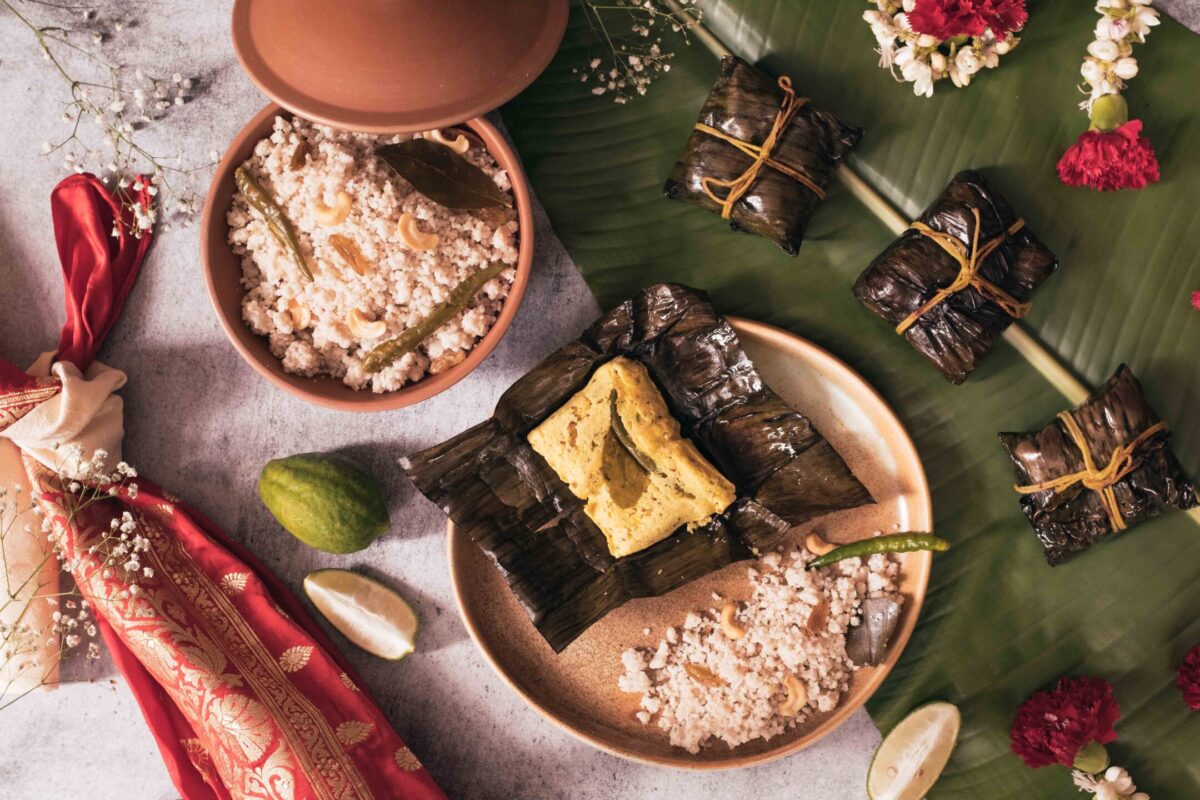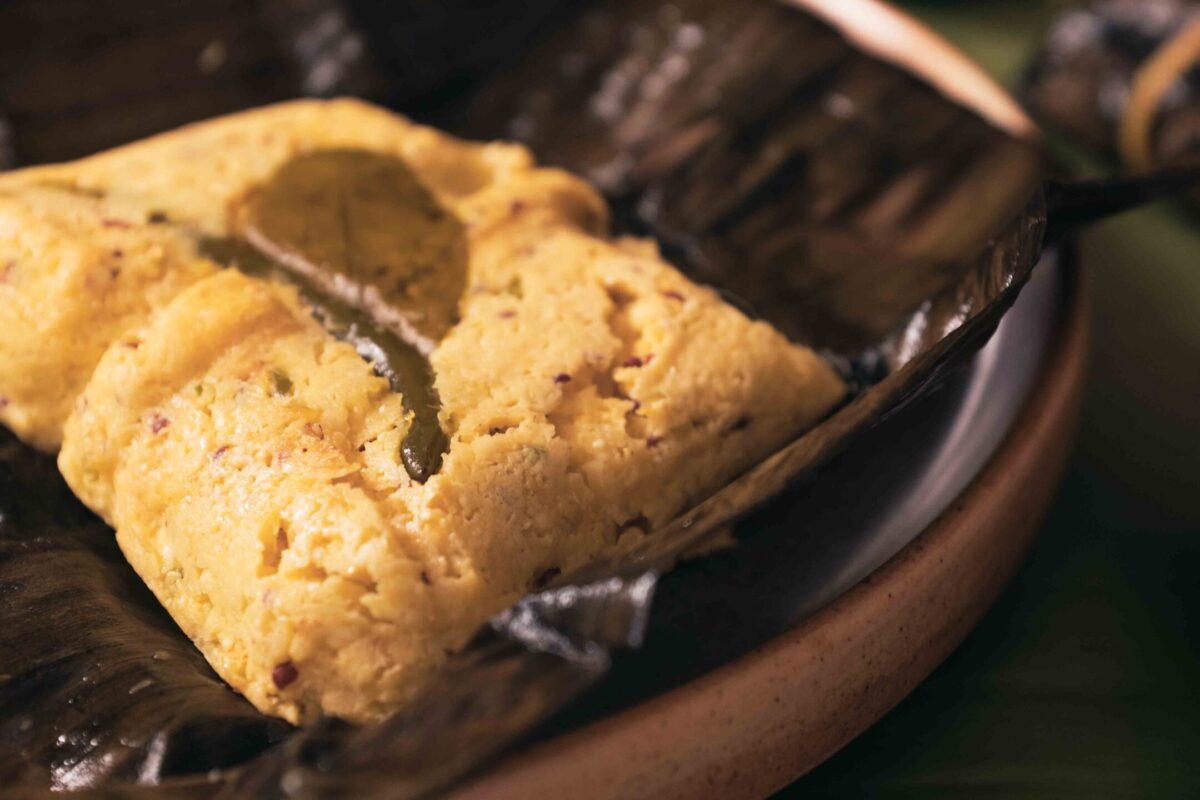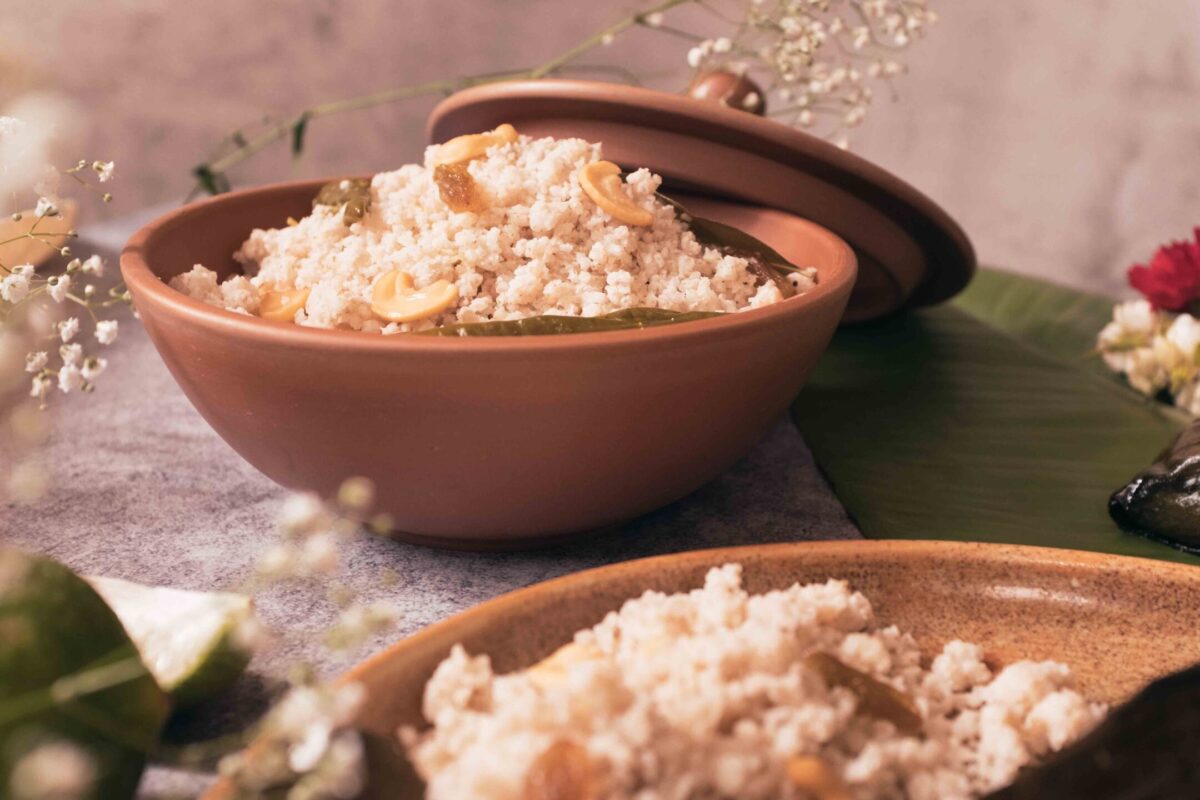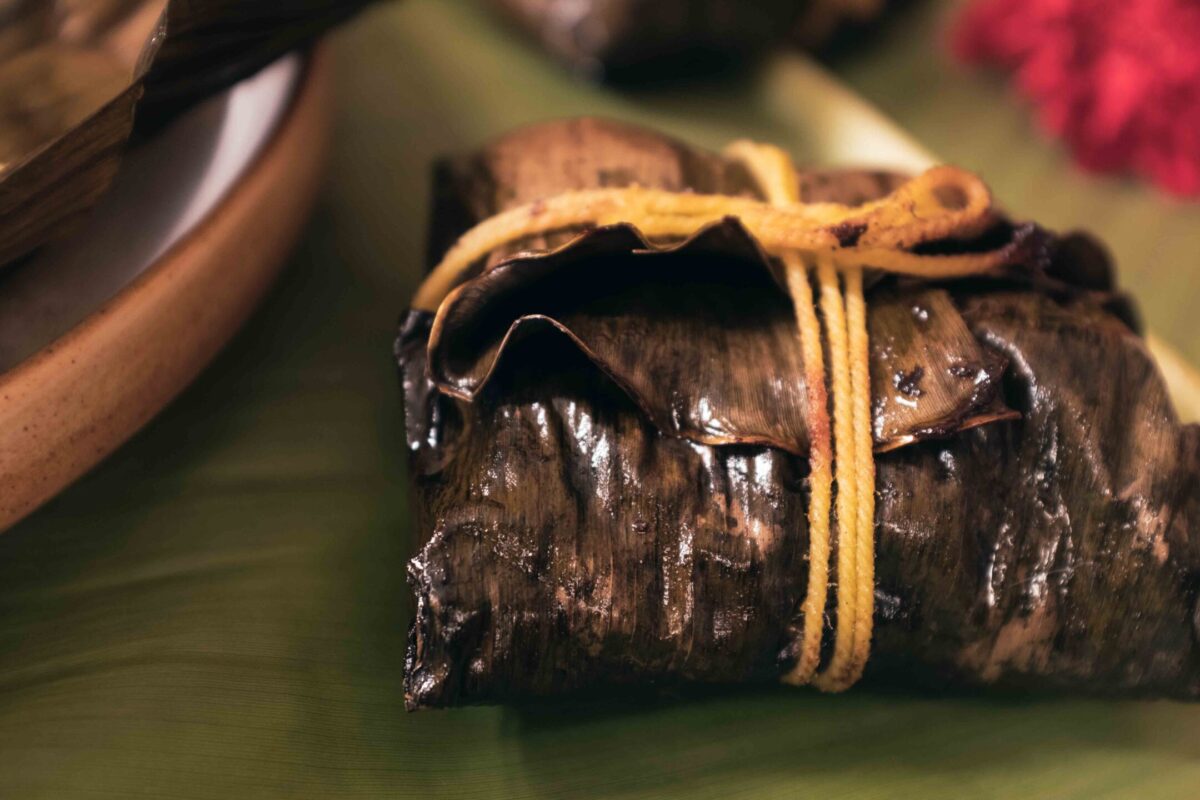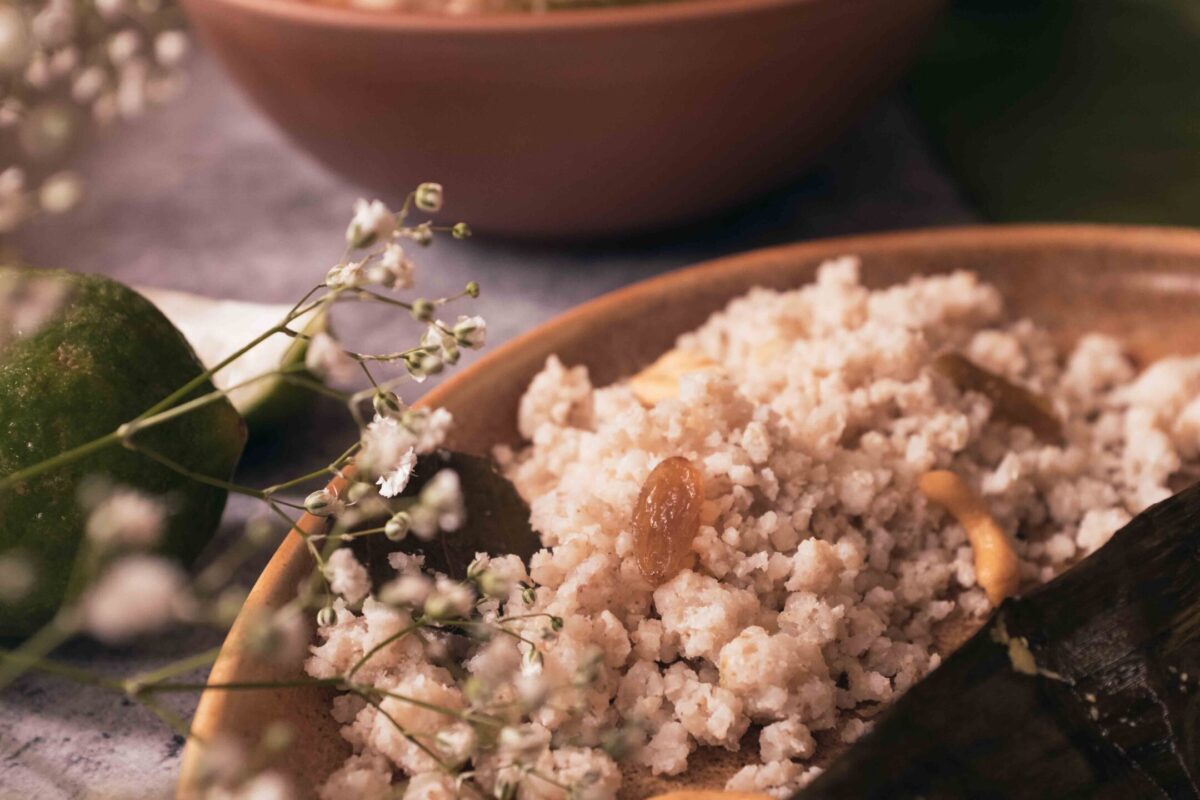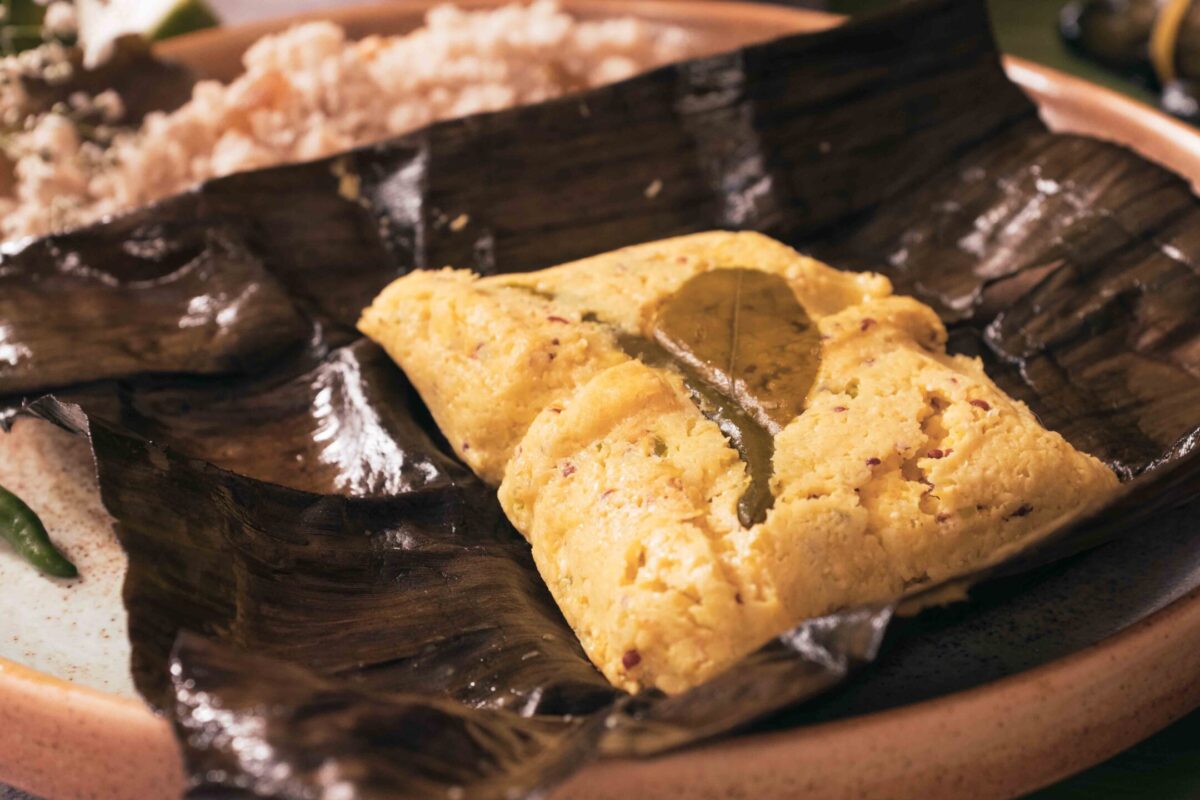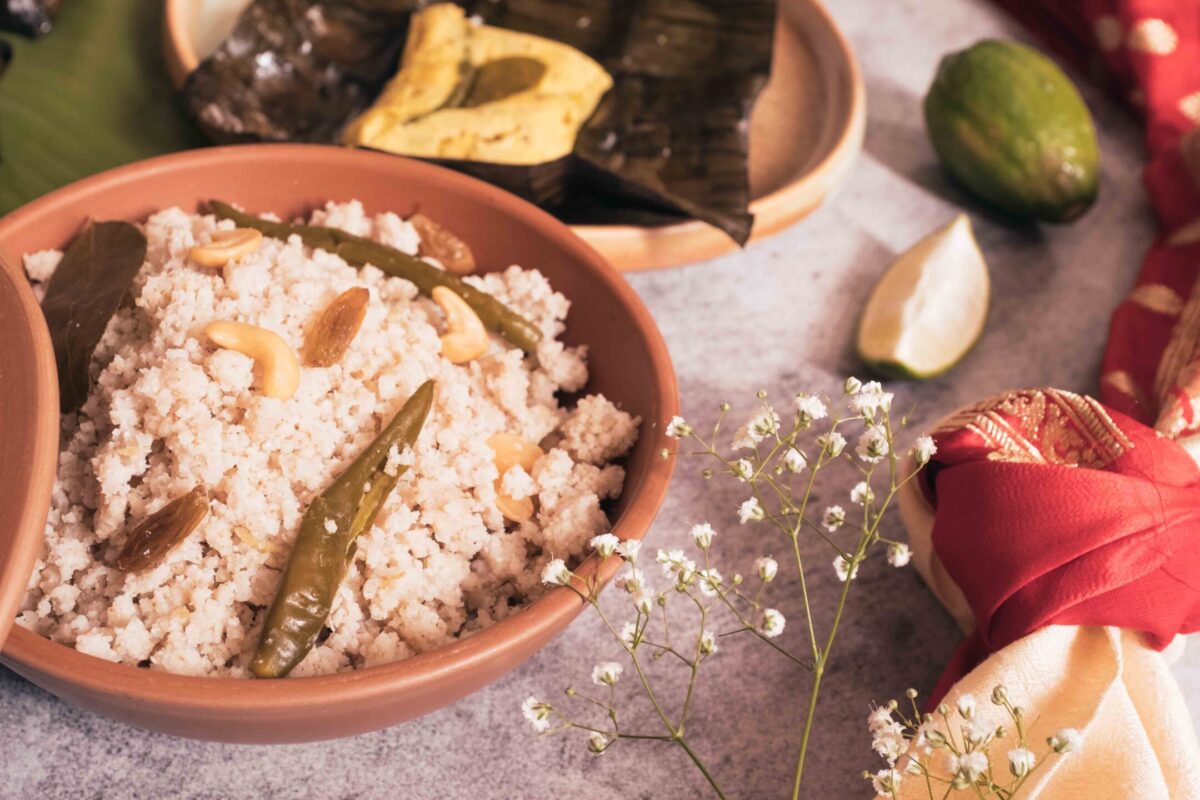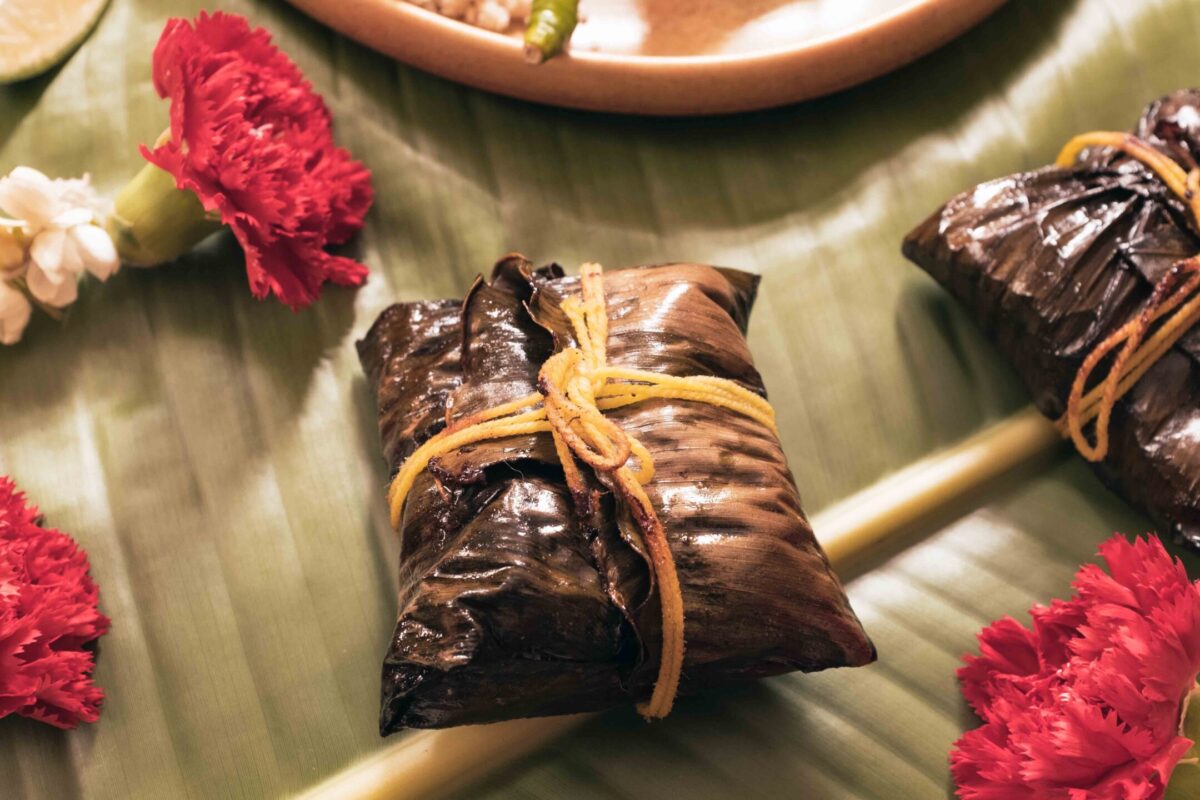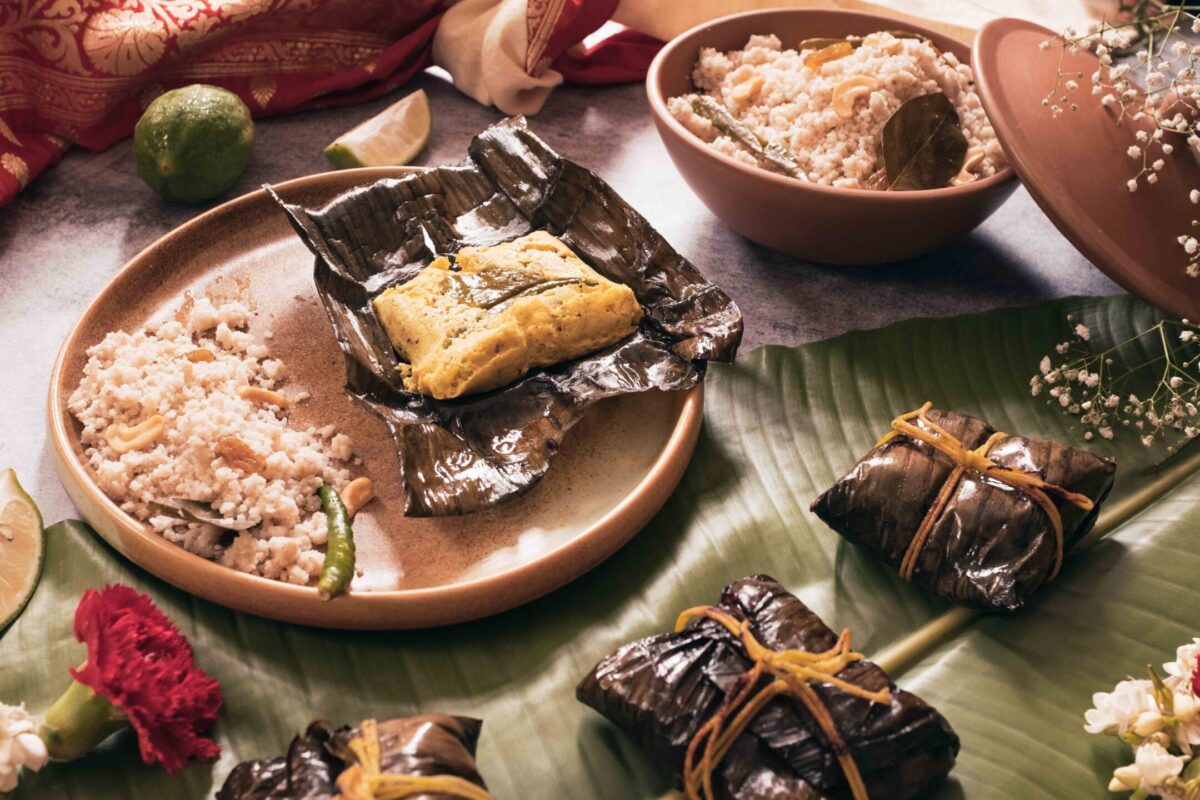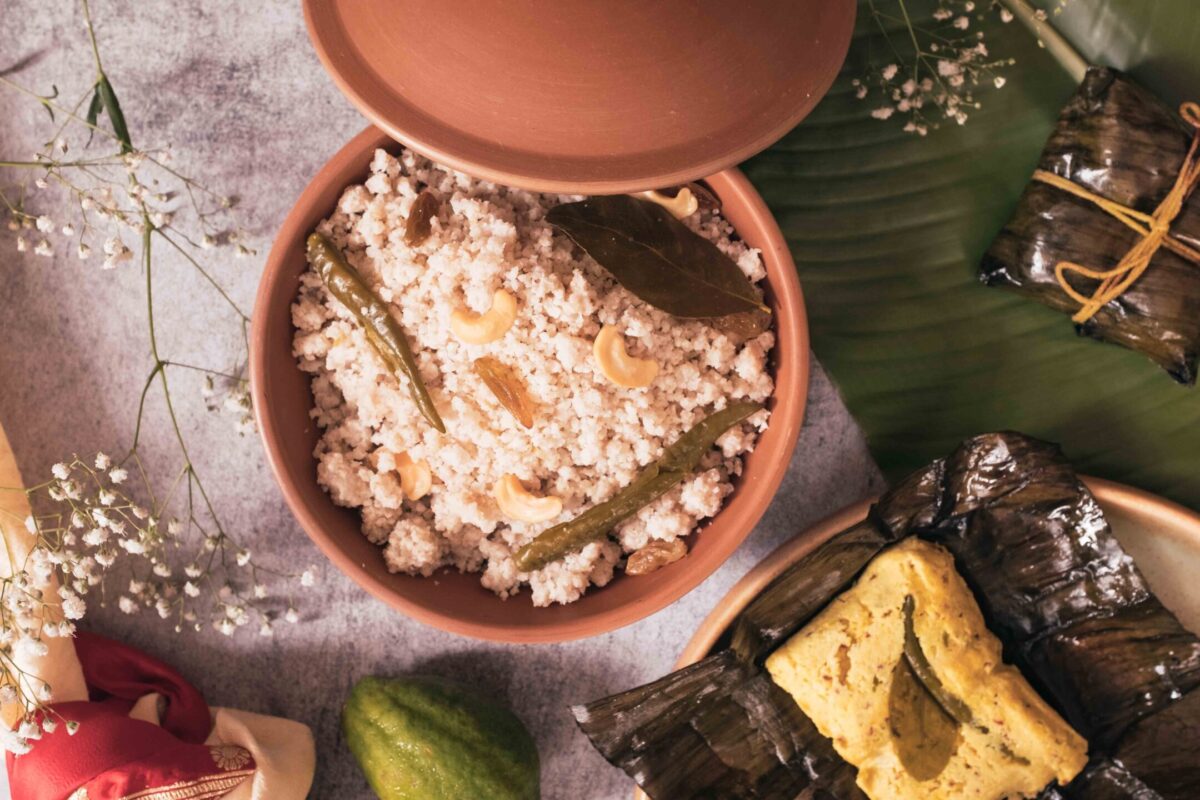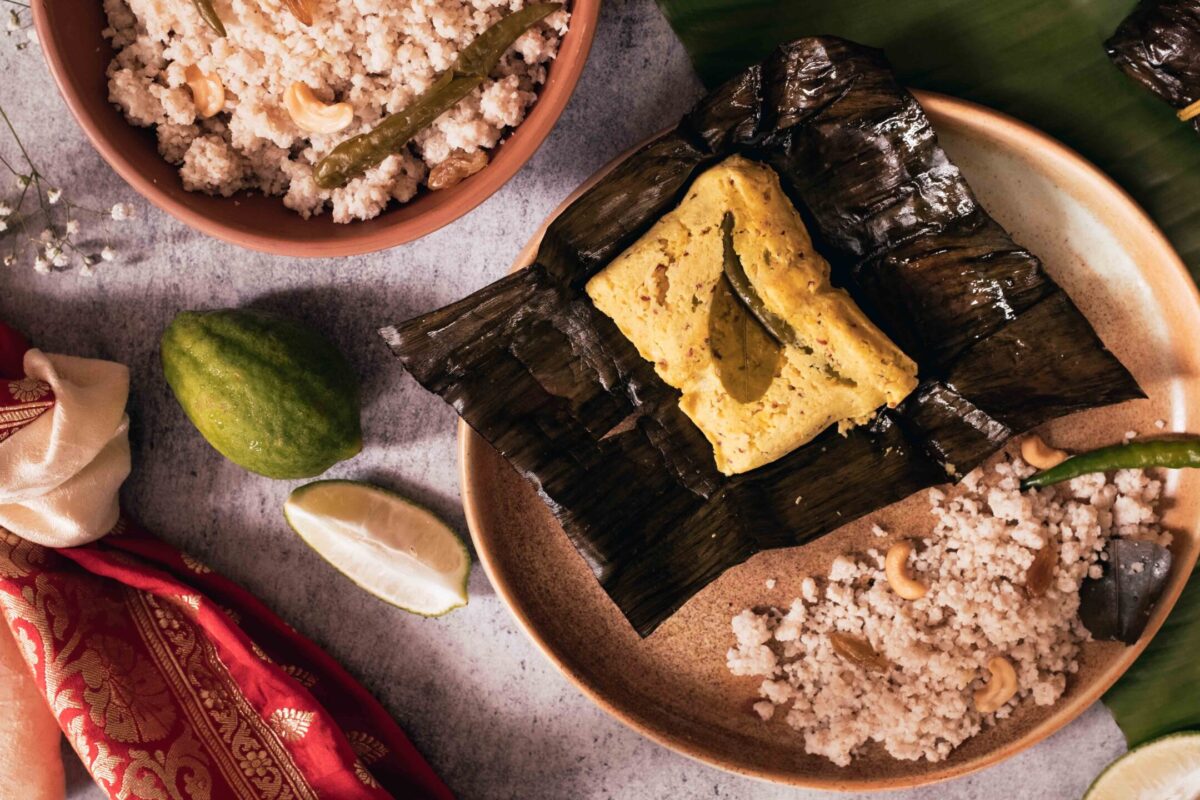Makes 6 servings.
I first sampled chhana’r paturi during our wedding celebrations, and wanted to marry it as well. To make it, soft cottage cheese is mixed with a mustard seed paste and patted into a rectangle to look like a fillet of fish. It is then wrapped and cooked in banana leaves. An homage to the flavours of Bengal, this fully vegetarian, Satvik meal comprising chhana’r paturi and fragrant, gondhoraj ghol pulao (lemony little millet pilaf) can be enjoyed even by those following Navratri diet norms—and is proof that you don’t need fish and rice to make a wholesome and delicious Bengali meal.
At a glance
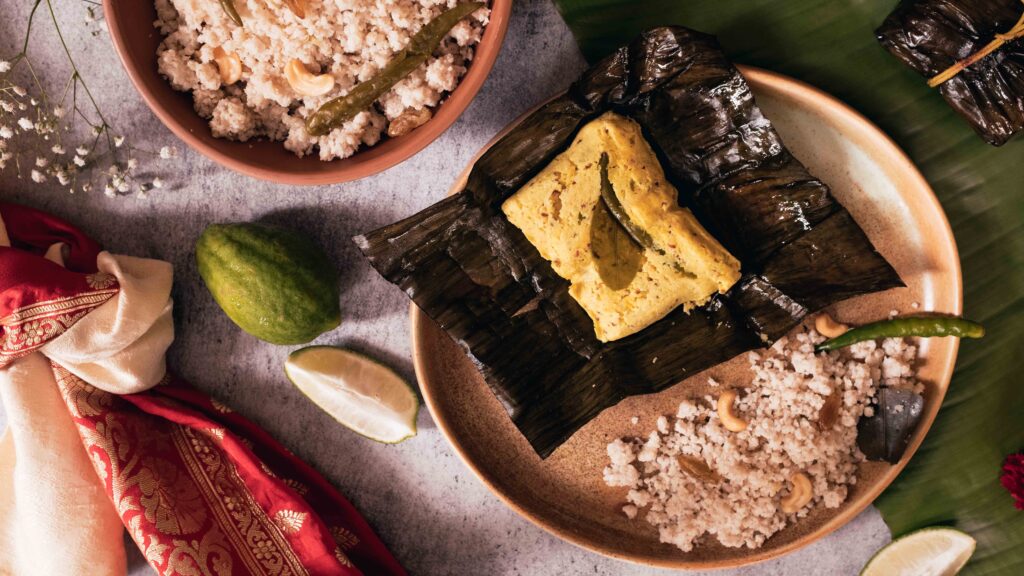
– This recipe comprises chhanar paturi + gondhoraj ghol pulao.
– You will need banana leaves, cooking twine, a large iron skillet (9-10 inches), and a large cooking pot (4-5 litre).
– This recipe has been broken into 2 stages for ease and comprehension. Please read the entire recipe from start to finish before beginning.
Stage 1: chhana’r paturi
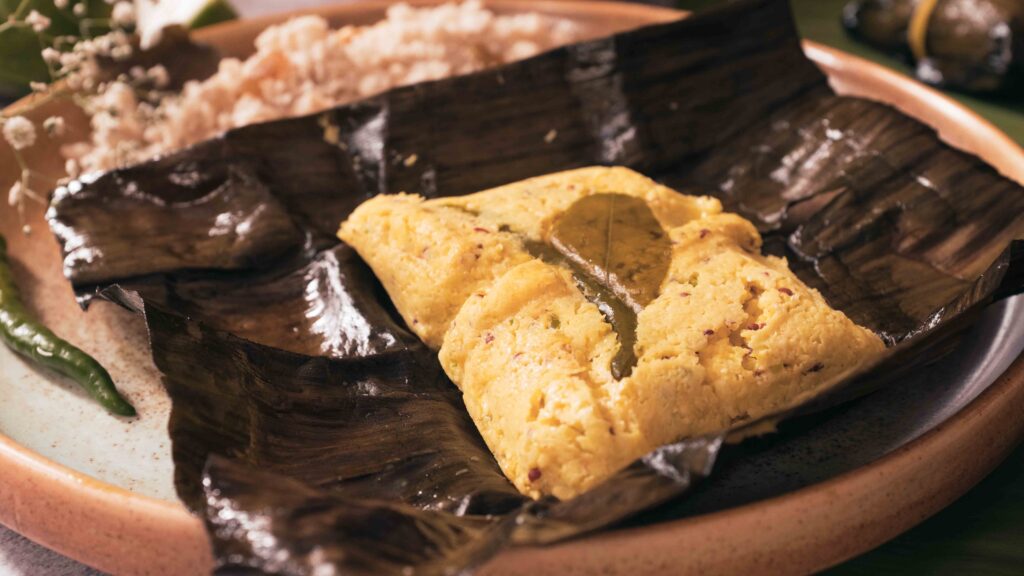
Ingredients wrapped and cooked in leaves are called “paturi” in Bengali. Usually made with barramundi (Bengali; bhetki) filets, this paturi is the vegetarian version. Once cooked, the cottage cheese should hold together as a ‘fillet’, but melt in your mouth. Although mustard seed is pungent and mustard oil is sharp, this is a mild mustard paste and won’t have your sinuses clearing with every bite!
Ingredients
1. 400 gm fresh cottage cheese (chhana/paneer)
2. 2 tbsp. mustard oil like this
3. 3 green chillies
4. 6 lime leaves from Gondhoraj limes like this
for the mustard paste:
5. 3 tbsp yellow mustard seeds
6. 1 tbsp black mustard seeds
7. ¾ tsp turmeric powder
8. 1 tsp sugar
9. 3 tsp salt
10. 1 green chilli
11. Plain water for soaking
for the coconut paste:
12. 100 gm (roughly ¾ cup) freshly grated coconut
13. 1-2 green chillies
To wrap the paturi:
14. 3-4 banana leaves
15. 4 tsp mustard oil like this + extra for greasing and cooking
16. Cooking twine
If you plan to use readymade Bengali mustard powder like this, use 2-3 tablespoons of it and follow the package instructions when rehydrating it. The more you add, the more pungent your paturi will be.
Prep
1 – Grab your banana leaves. Remove the central midrib of each leaf while taking care to keep the rest of the leaf intact. Then cut the banana leaves to a manageable size (I did slightly smaller than 13×9 inches) to fit my 13×9 inch tray.
2 – Fill a deep tray with hot water. Then submerge the portioned leaves in the hot water. After 5 minutes, remove them from the tray and lay them out on a kitchen towel. Thereafter wipe them dry, going along the grain. Watch this for a full demonstration on how to clean banana leaves.
3 – Cut the banana leaves into 6 equal sheets, 9 inches by 7 inches. Set aside.
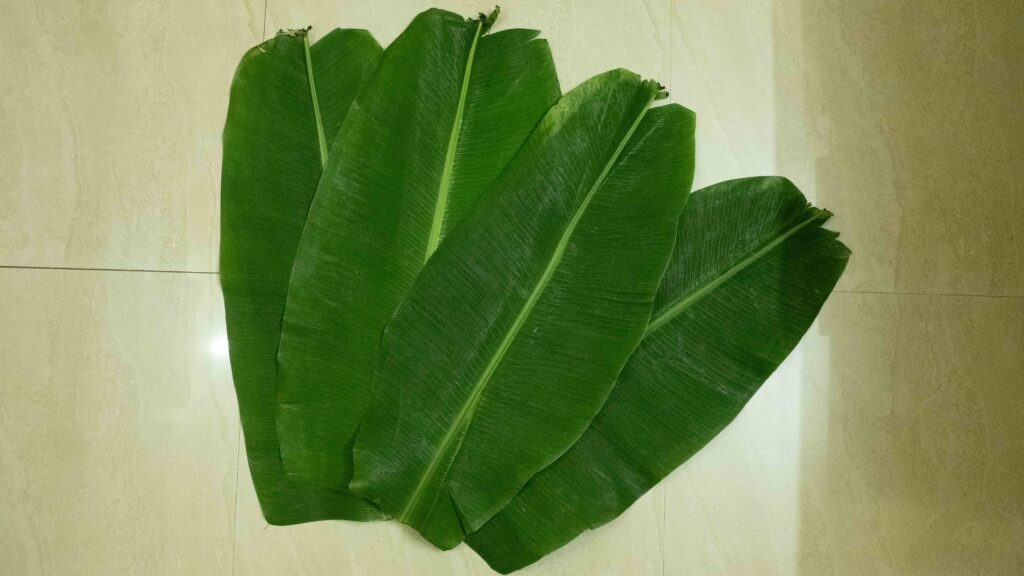
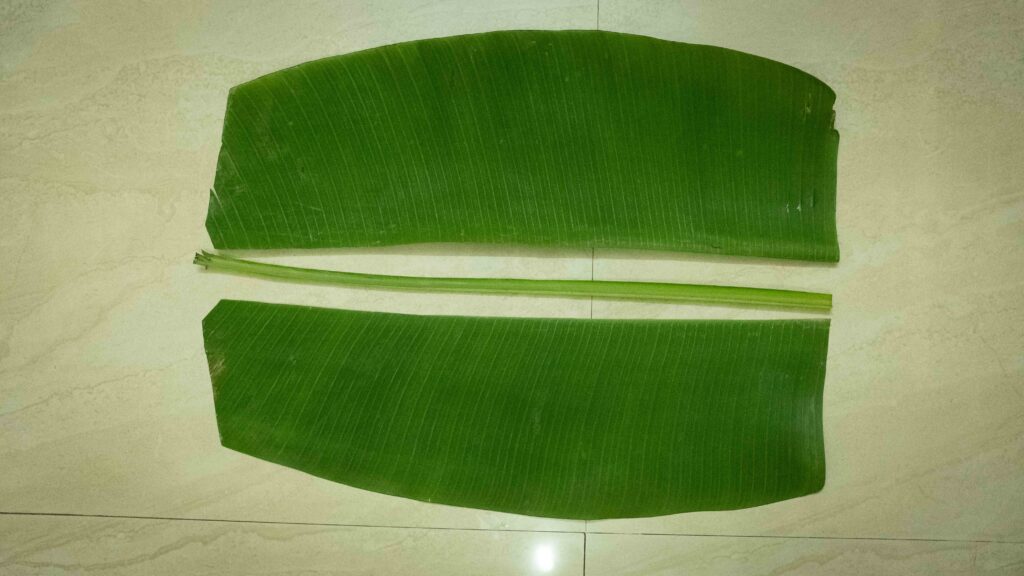
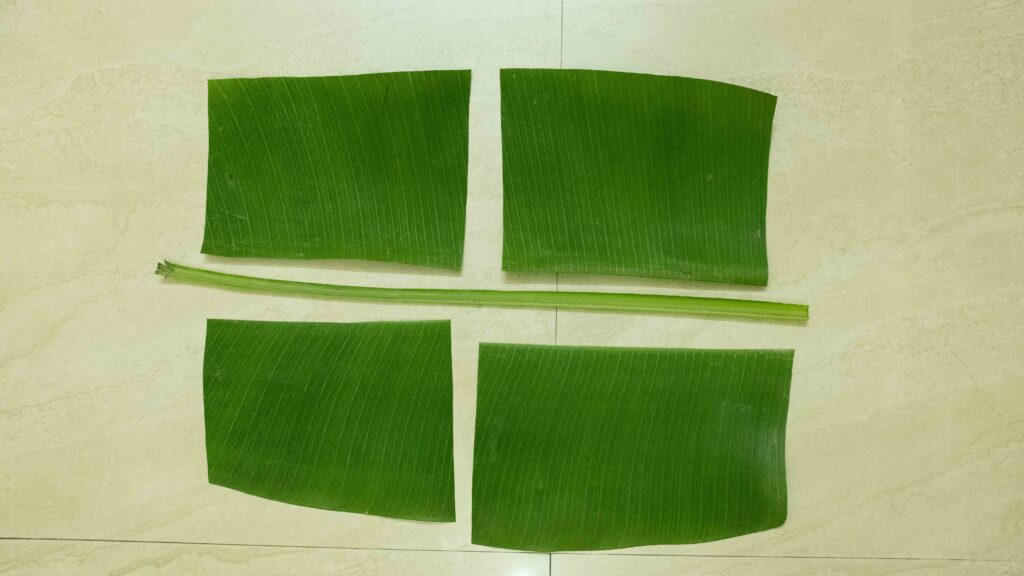
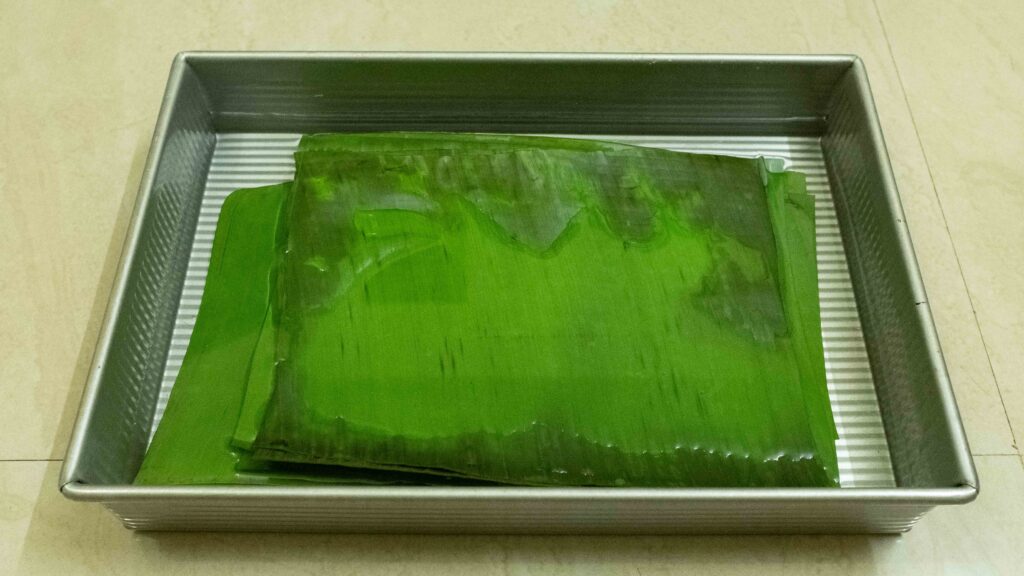
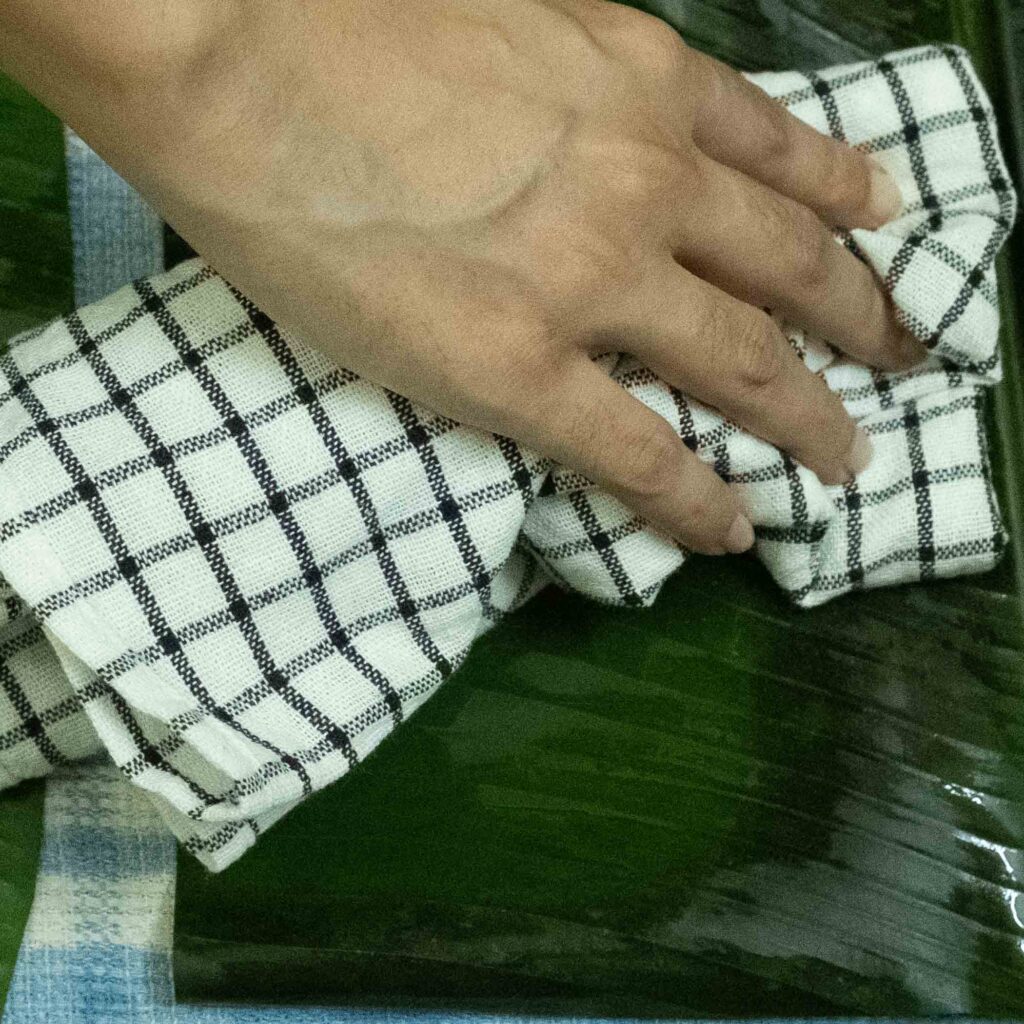
Method
1 – Soak 3 tablespoons yellow mustard seeds and 1 tablespoon black mustard seeds in plain water for 30 minutes.
2 – After 30 minutes, strain the water from the seeds and place the wet seeds, turmeric powder, salt, sugar, and 1 green chilli in the jar of a wet grinder. Grind to a coarse paste. Set aside. Hack alert! Since this is such a small amount, I used a textured cutting board and rolling pin to grind my mustard paste. It takes some time—and totally works—plus it’s more efficient than using a large blender wherein the blades can’t reach the mixture.
3 – To the jar of a blender, add the grated coconut and 1 green chilli (or another if you like it hotter). Grind together until you get a coarse paste or a smooth paste. A smooth paste will make for a finer textured paturi. Set aside.
4 – Using a cheese or vegetable grater (small holes), grate the cottage cheese so that you get a fine, lump-free texture. Even if you’re using homemade cottage cheese, I highly recommend doing this step to get an even texture.
5 – To the grated cottage cheese, add all of the mustard paste, all of the coconut-chilli paste, and 2 tablespoons mustard oil and mix well. Knead the mixture for a minute or two. You will have about 600-610 gm of the mixture.
6 – Divide the mixture into 6 equal portions, weighing roughly 100 gm each.
7 – Heat the banana leaf sheets from one end to the other (dark side-down) over a low flame for a few seconds. This softens the leaves, making them pliable for easy folding. Take care not to burn or blacken the leaves.
8 – Once they’re soft, grease the pale side of each of the leaf sheets with ½ a teaspoon of mustard oil.
9 – Now place each portion of the cottage cheese mixture carefully over the greased side of a banana leaf sheet. Using your fingers, gently shape the mixture into a rectangle, roughly 3 ½ inches by 2 ¾ inches.
10 – Slit 3 green chillies down the middle. Place 1 slit green chilli (slit-side down on top of the shaped rectangle of cottage cheese. Now place a Gondhoraj leaf alongside. Finally, drizzle a teaspoon of mustard oil on top of the rectangle.
11 – To wrap up the parcel, fold over the top and bottom sections of the banana leaf sheet. The fold in the left and right sides of the sheet. Tie up the parcel with some cotton cooking twine. Repeat steps 7-9 until you have all 6 parcels or 6 paturi.
12 – Generously grease an iron tawa or a cast iron skillet with mustard oil and heat it on low. Once warm, place the paturi on the skillet. Cook covered for 15 minutes on low heat, flipping the paturi every 5 minutes. The paturi will swell up as they steam and fry. Remove the lid, flip the paturi one last time and cook for a further 5 minutes for a total cook time of 20 minutes. The colour of the paturi will go from green to dark brown over the course of the cook.
13 – After 20 minutes, turn off the heat and remove the lid. Let the paturi rest for 5 minutes before serving and unwrapping.
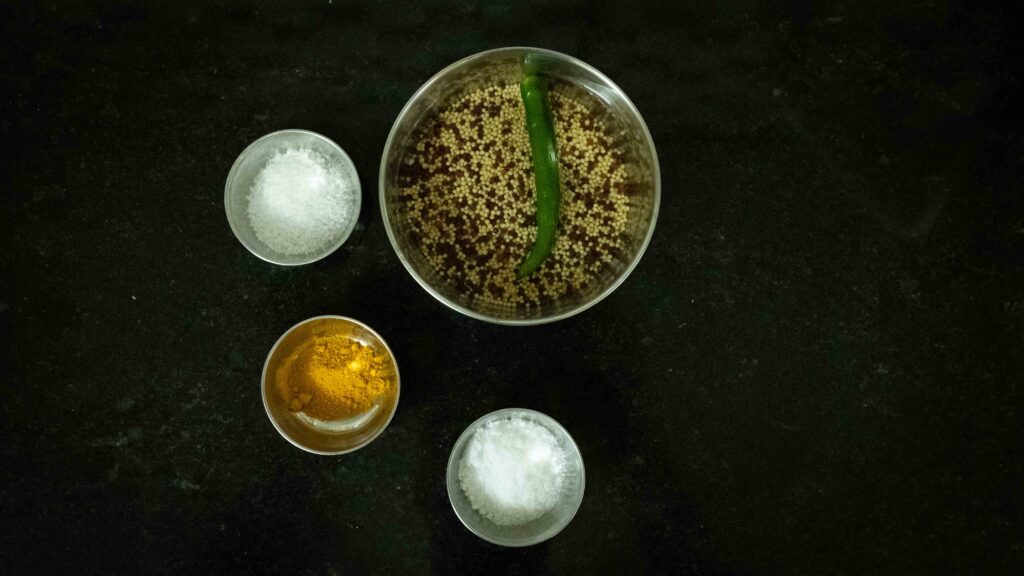
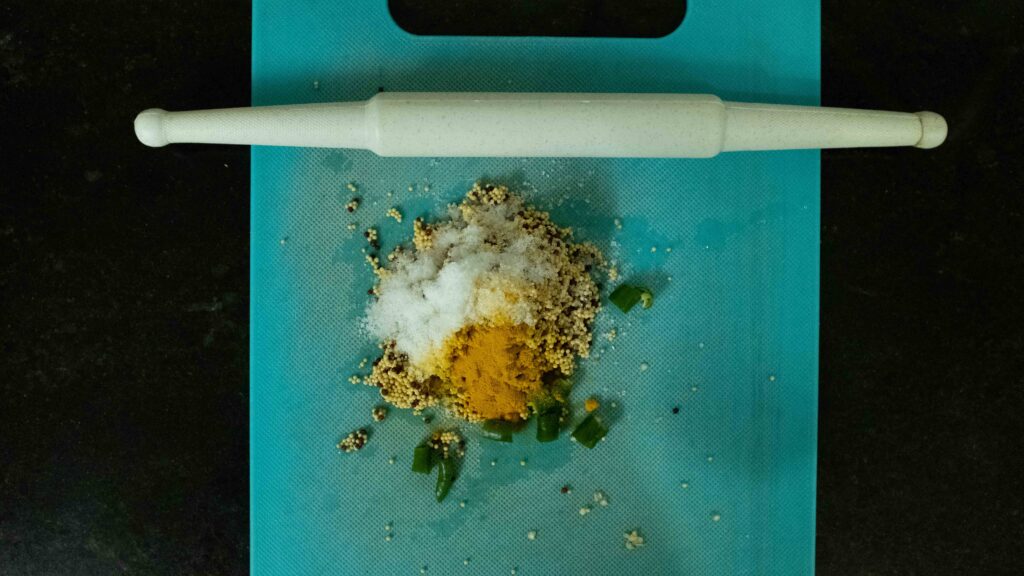
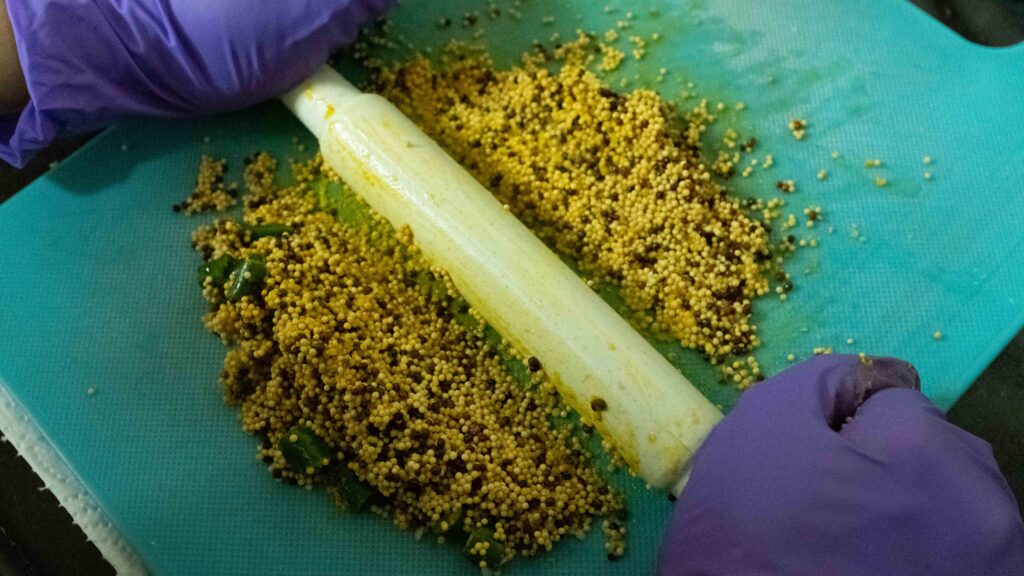
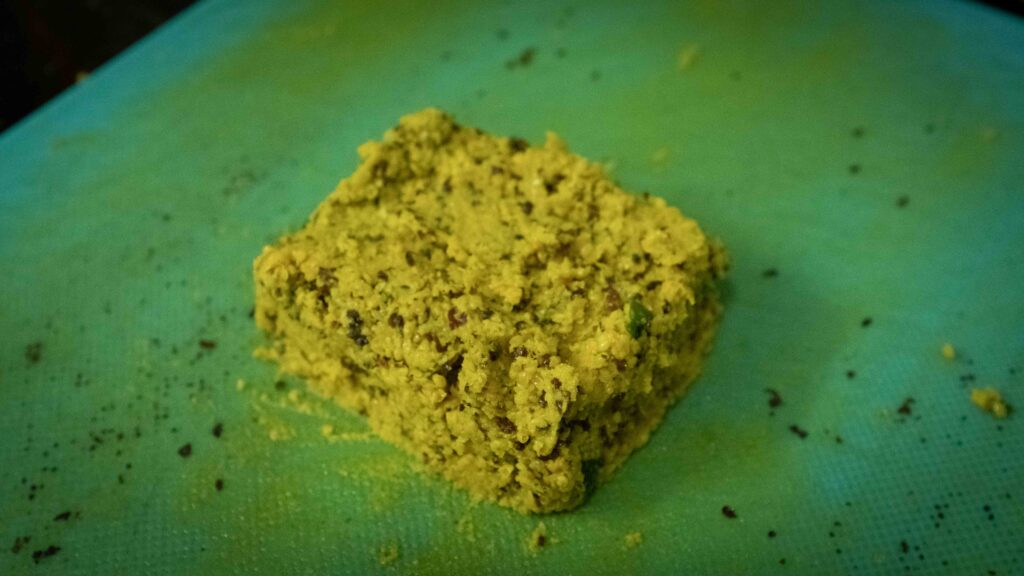
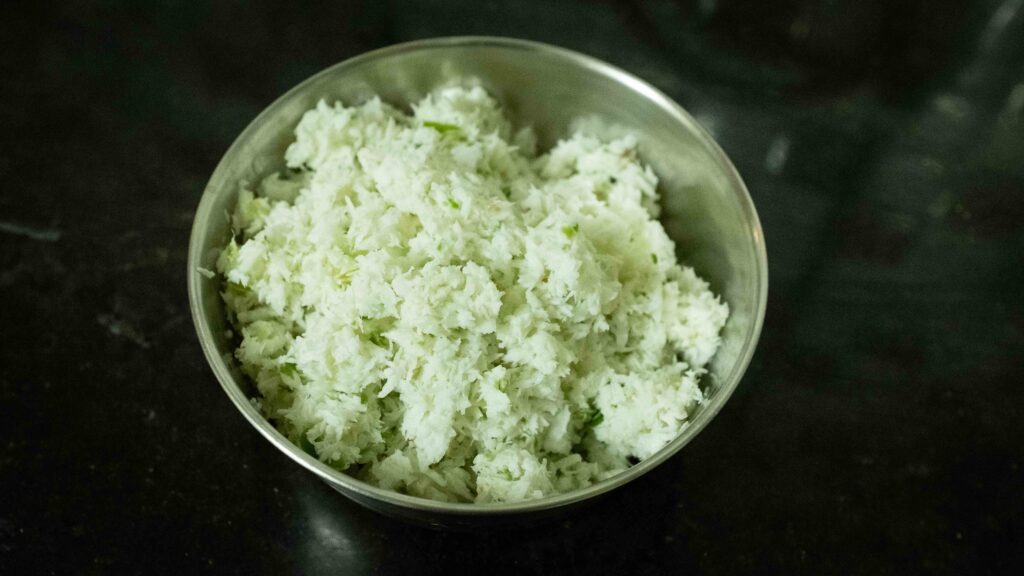
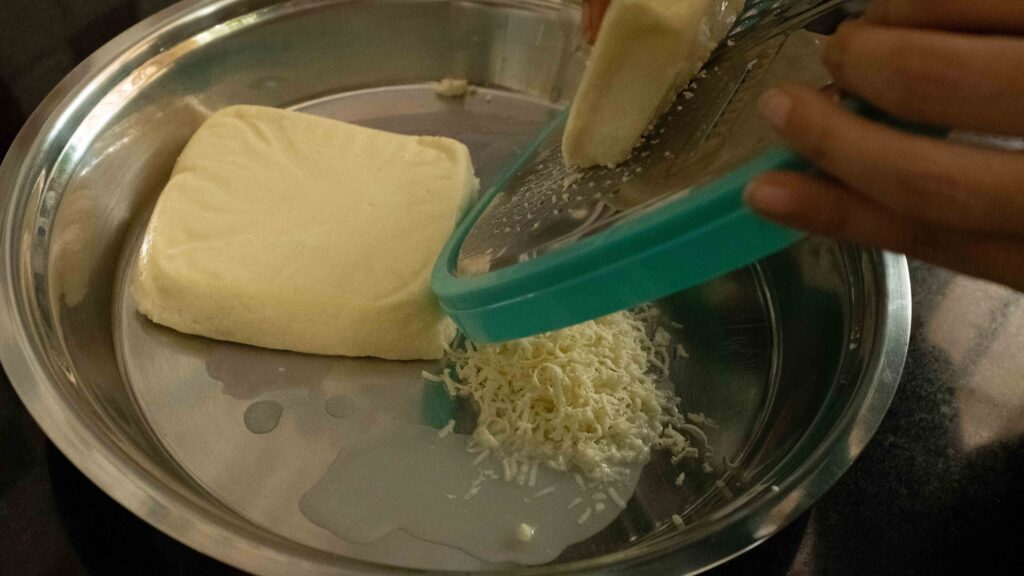
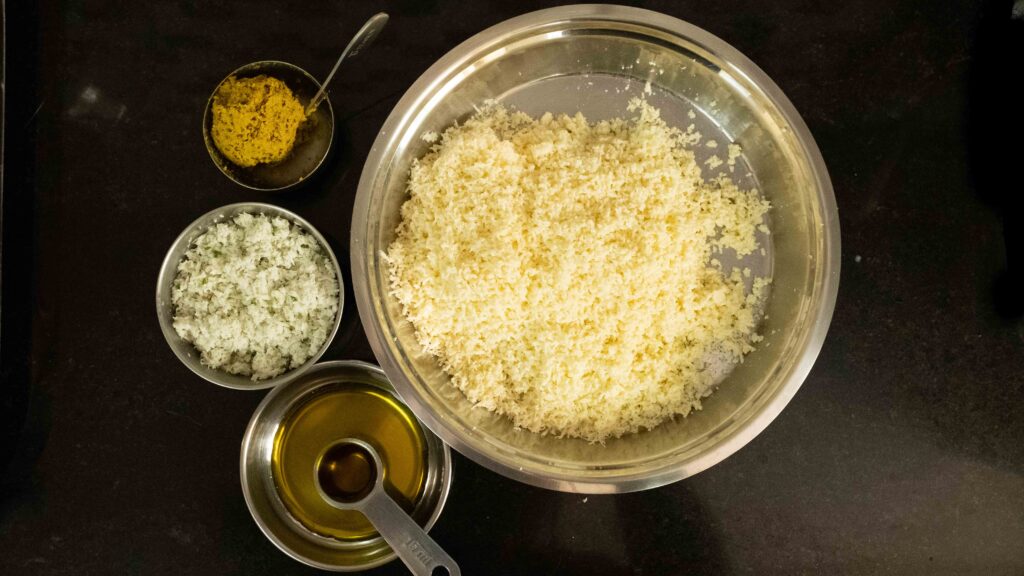
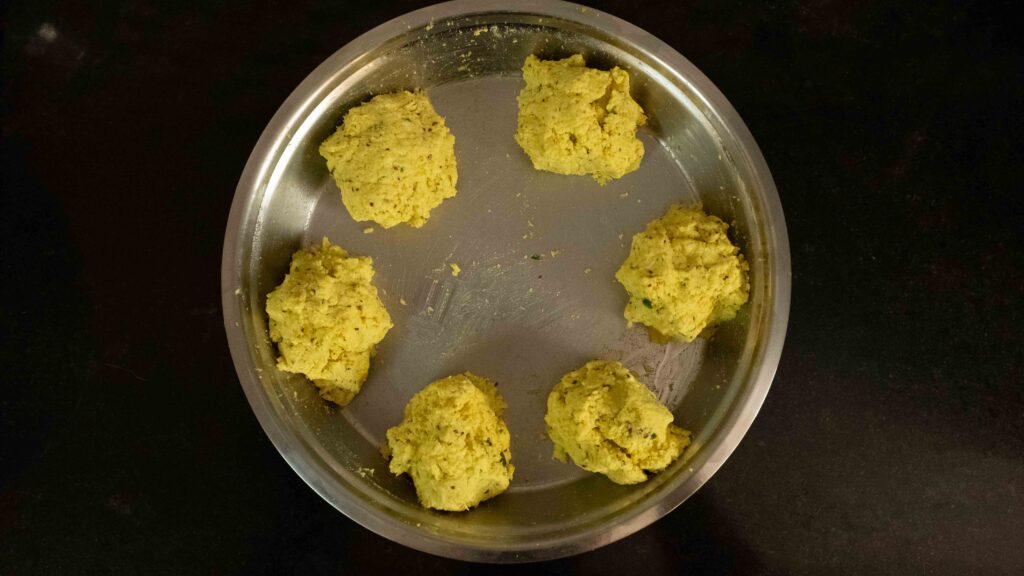
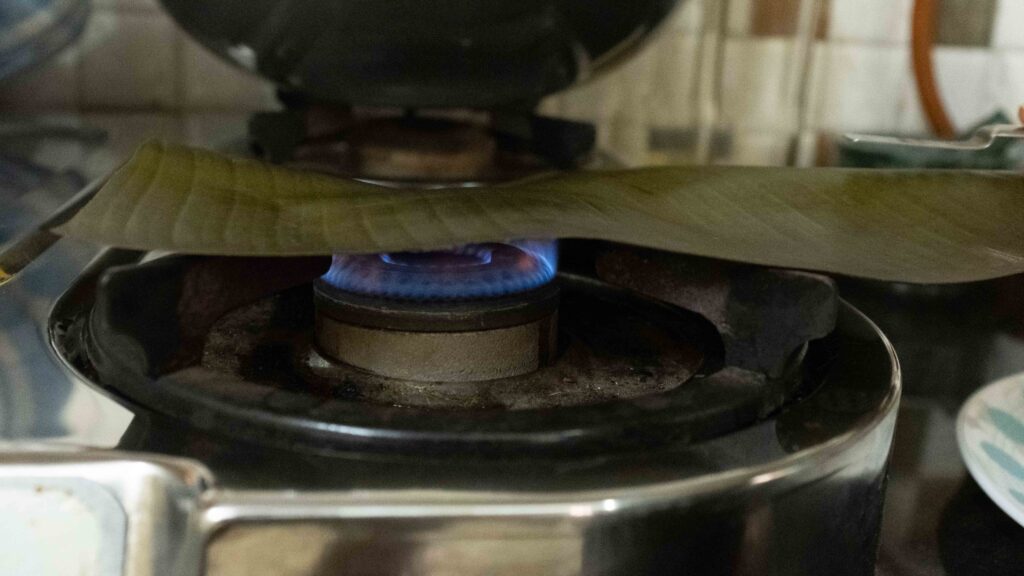
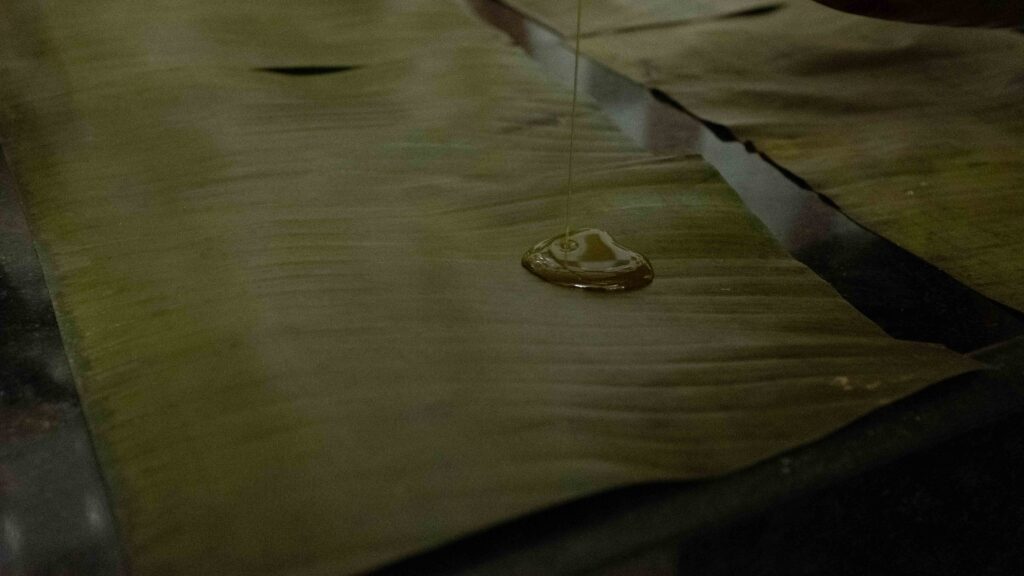
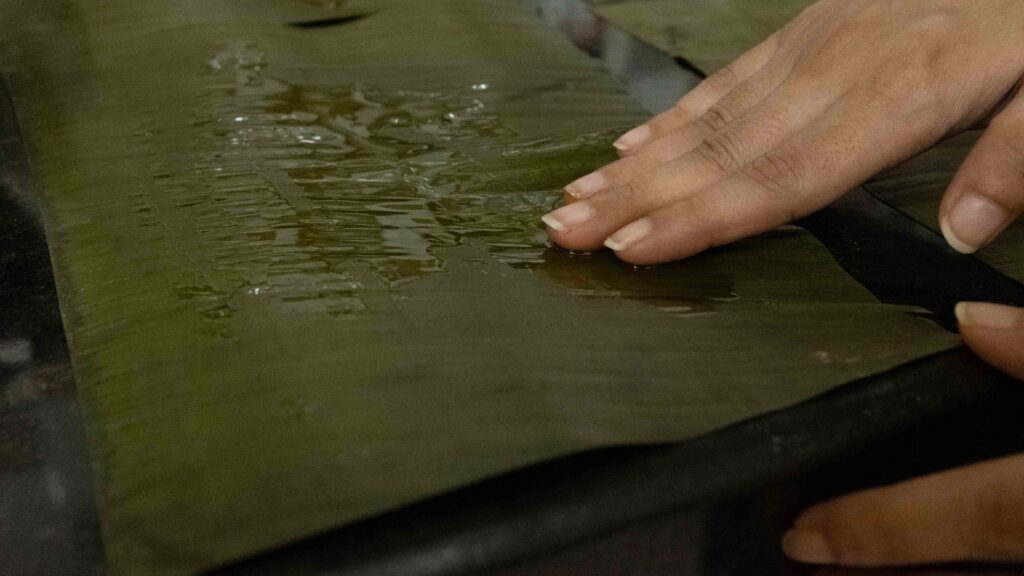
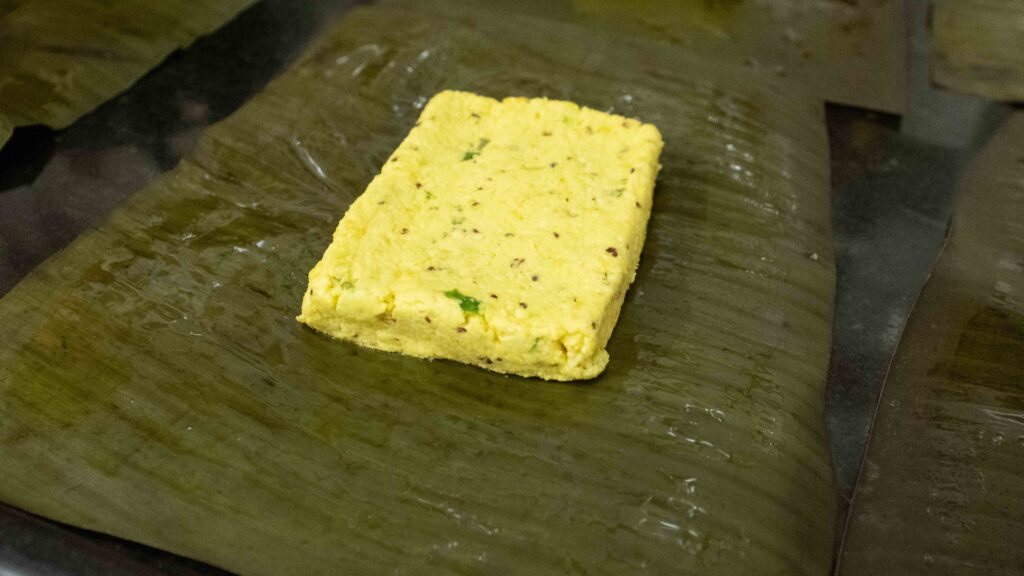
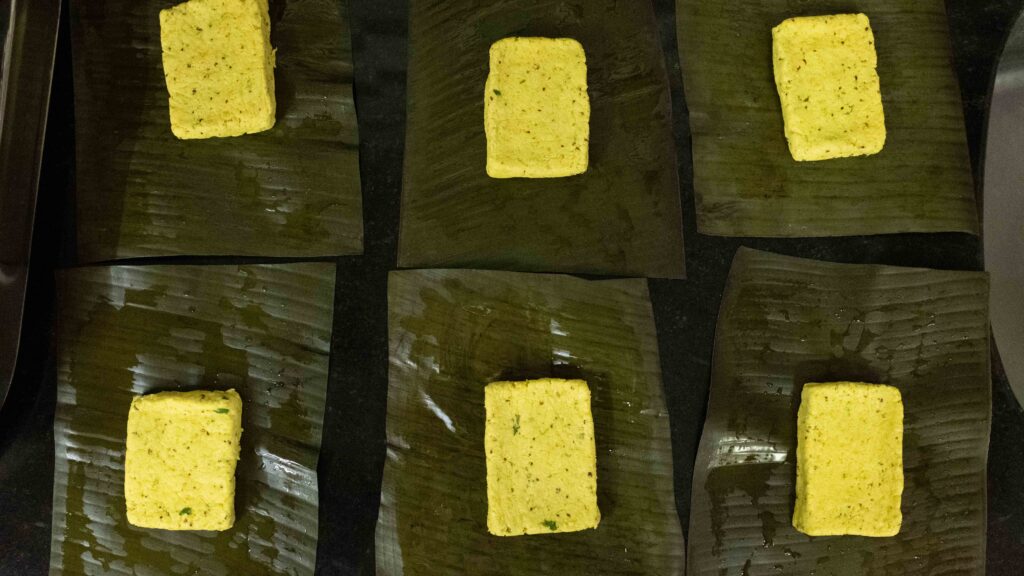
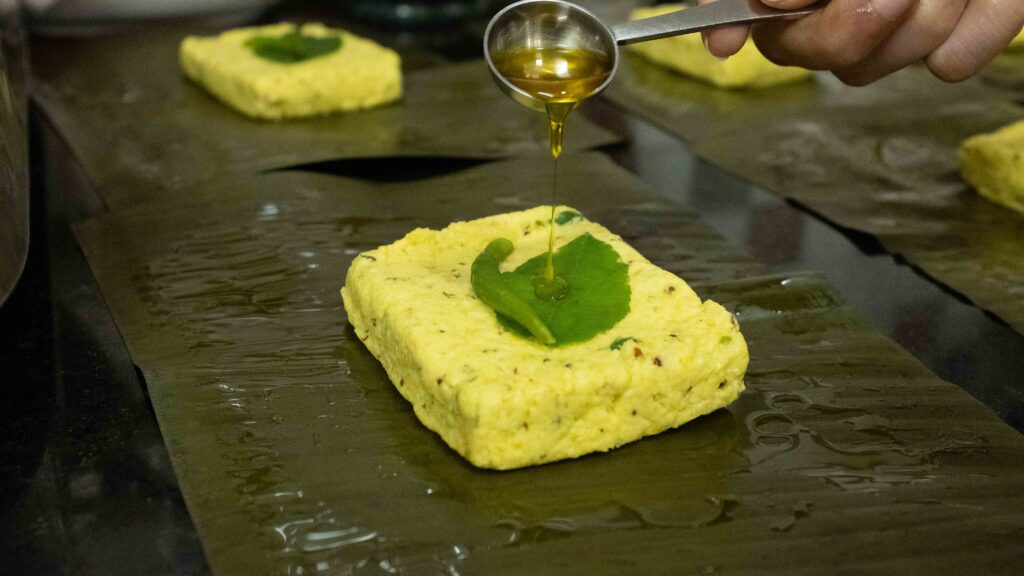
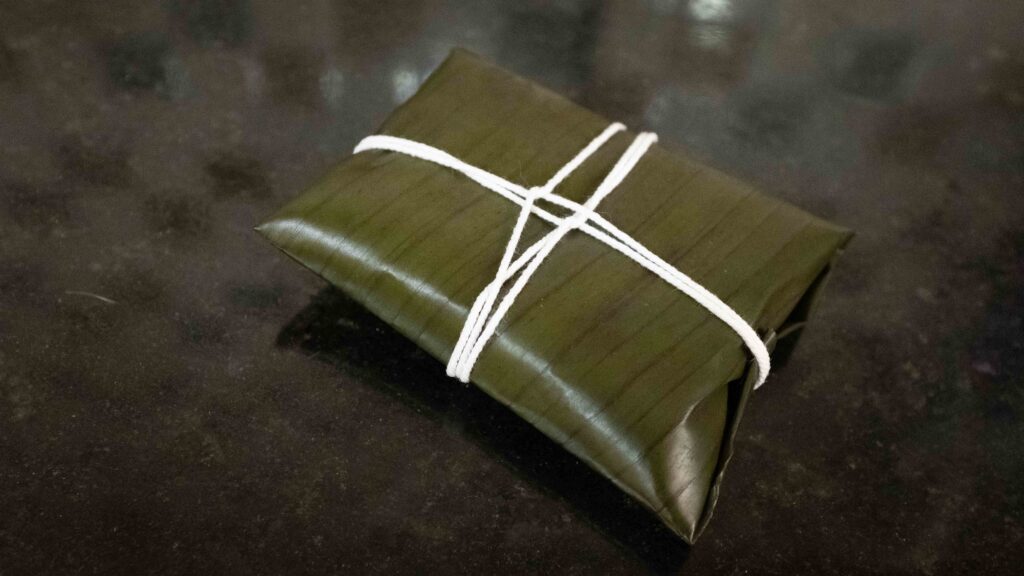
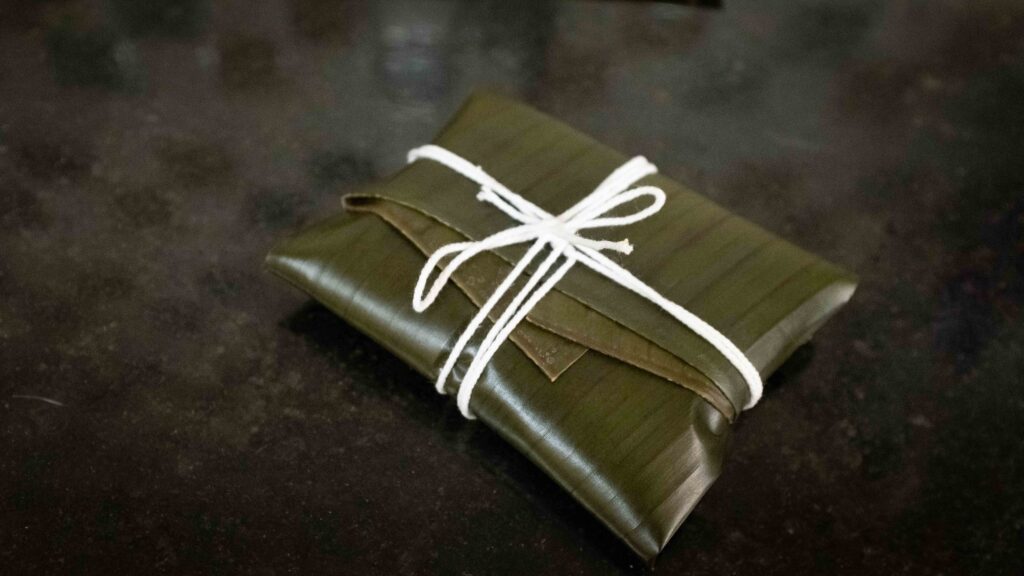
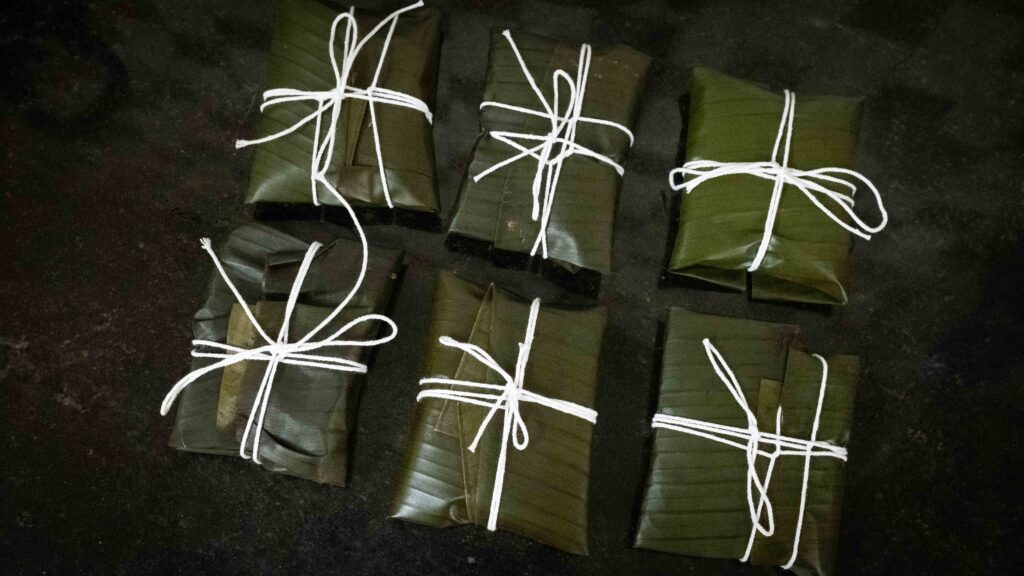
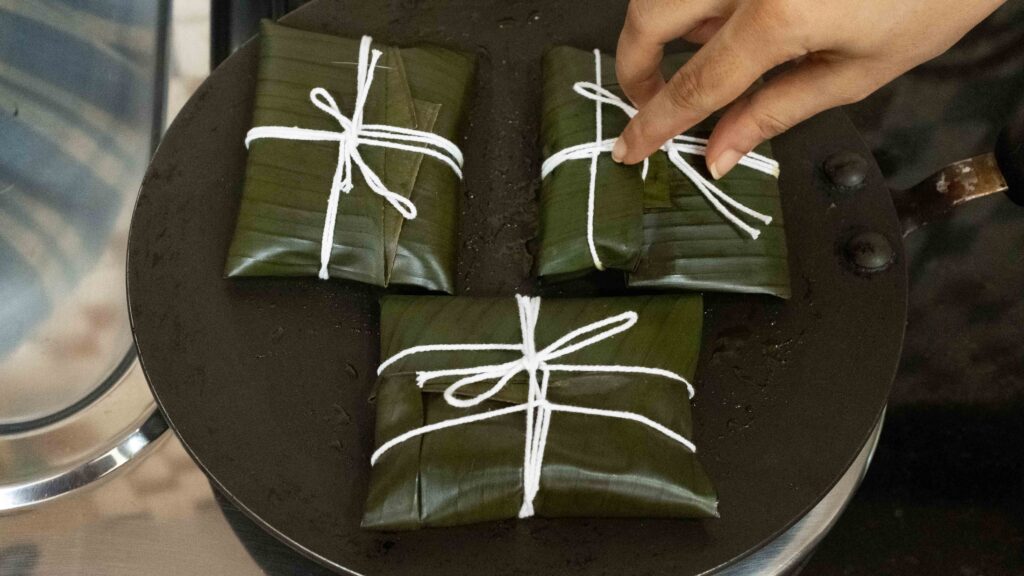
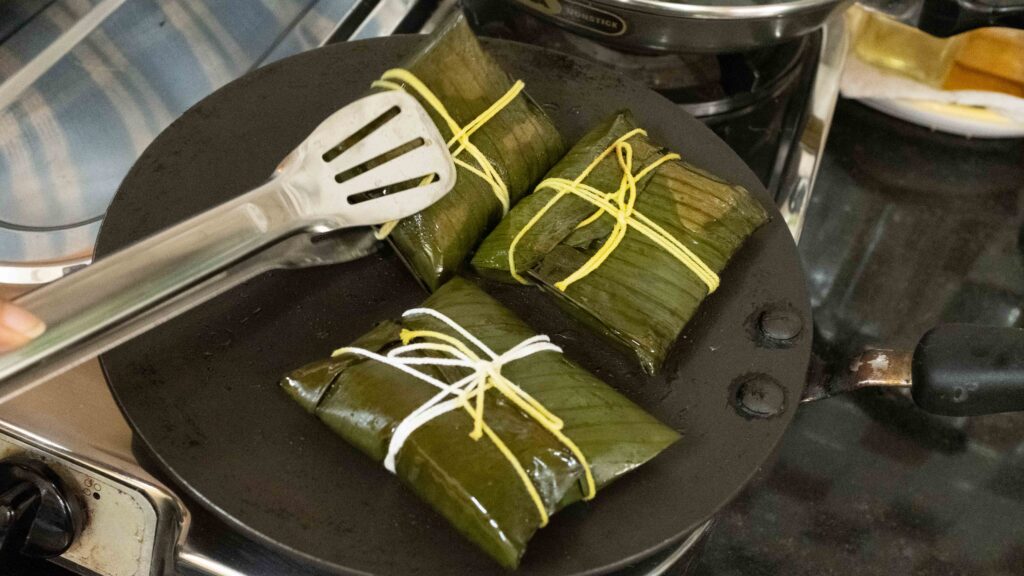
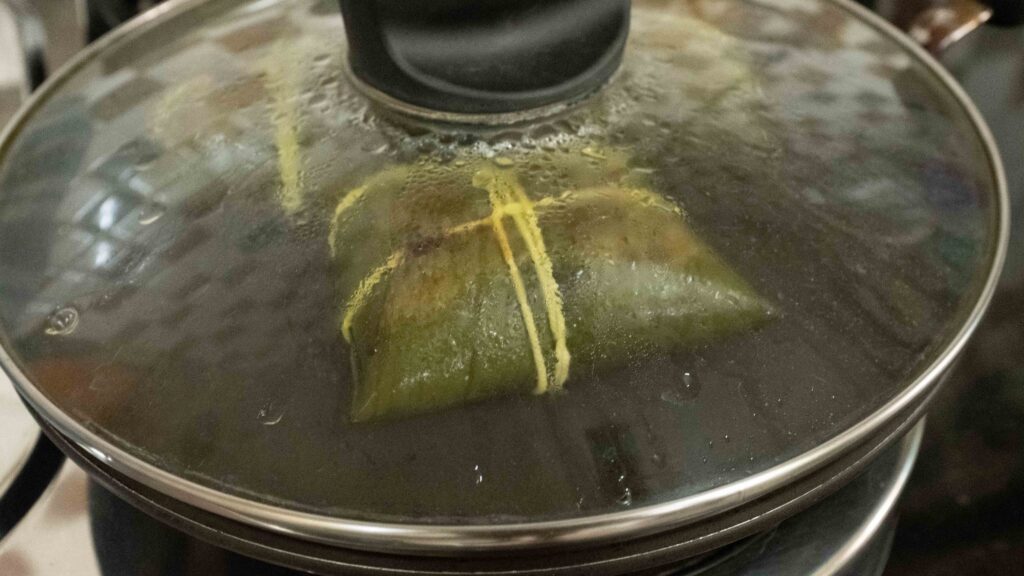
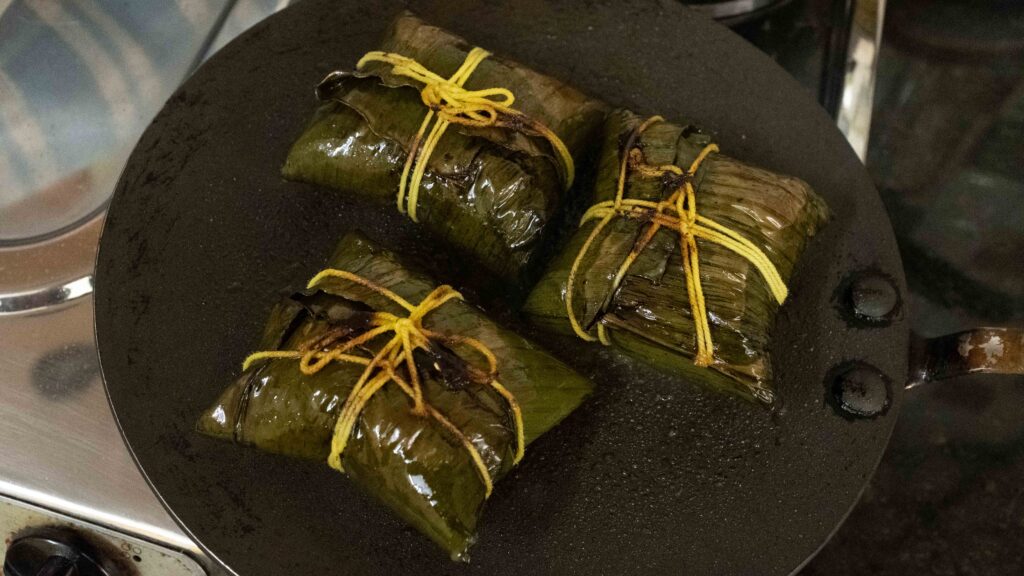
In this cooking method, the banana leaves slowly get toasted roasted, and the tea-like smokiness is transferred to the food. So, even though you do not eat the banana leaves themselves, they play a big role in the overall flavour profile of the dish. As such, the dish cannot be made with baking parchment or en papilotte methods of cooking. Although it tastes best right off the skillet, paturi can be reheated in the microwave (leaves and all) before serving.
Stage 2: Gondhoraj ghol pulao
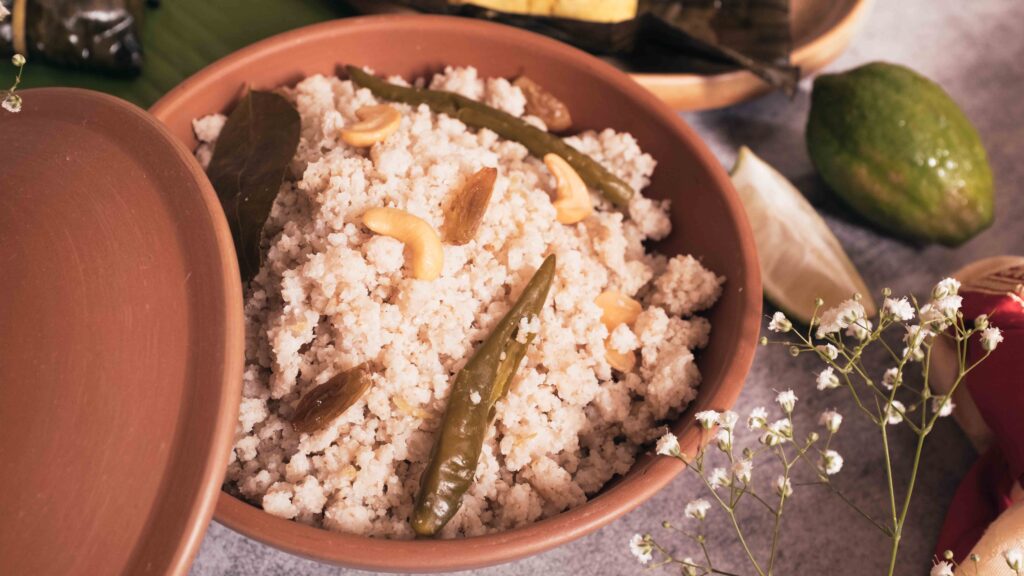
This very old, very traditional Bengali recipe has been made Navratri-friendly, by swapping out the Gobindhobhog rice for Little Millet (Samai Rice)—which tastes very similar to broken rice when cooked. Cooling against the pungency of the paturi, this refreshing pulao perfumed by Gondhoraj lime (Rangpur lime), is a true feast for the olfactory senses and pairs wonderfully with a range of vegetarian and non-vegetarian main dishes.
Ingredients
1. 400 gm (roughly 2 cups) Little Millet aka Samai rice
2. 250 cup plain yoghurt
3. 750 ml water
4. 1 tbsp zest from 2 medium Gondhoraj limes like this
5. 2 tbsp juice from 1 ½ medium Gondhoraj limes like this
6. 4 tsp salt
7. 4 tbsp ghee like this
8. 20 raw cashews split
9. 20 golden raisins
10. 2 Indian bay leaves
11. 1 inch cinnamon
12. 6 cloves
13. 3 cardamom pods
14. 9 whole black pepper
15. 4 green chillies
16. 5 Gondhoraj lime leaves from a lime like this
17. 2 tbsp. sugar
Gondhoraj literally translates to “King of Aromas” in Bengali. If you cannot get gondhoraj limes or their leaves, kaffir limes may be used in a pinch, but regular limes or lemons just will not do. Much like its distant cousin—the kaffir lime—the gondhoraj is wonderfully versatile; where the zest, leaves, and juice are all serviceable in recipes. Hard to juice but packed with aroma, the gondhoraj is cut lengthwise to expose its pale insides, which, when squeezed, emits a tiny aerosol of perfume that’s powerful enough to permeate the entire house. They are hard to grow outside of Bengal, but are readily available to buy online from here and here. My husband’s grandmother couriers us a big stash from her garden in Kolkata. If you’re outside of India and want to follow Navratri norms but cannot source Little Millet, you could use quinoa. You may need to add more water and increase the length of cooking time accordingly.
Prep
1 – Wash the millet well until the water runs clear. Transfer it to a bowl and add water to fully submerge. Leave it to soak for 30 minutes.
2 – After 30 minutes, use a fine-meshed strainer to drain the millet and spread the grains out to air dry. You could also place the soaked and drained millet under a fan to speed things up.
Method
1 – Once the millet is dry, transfer it to a bowl. Add 1 tablespoon of ghee to the bowl and coat the grains with the ghee. Set aside.
2 – Zest and juice your Gondhoraj lemons. I got 40 ml juice and 1 tablespoon zest from 2 average-sized limes. Set aside.
3 – Place the yoghurt in a bowl. To it, add 250 ml plain water, the salt, the lemon juice, and half of the lemon zest. Whisk well until you have a thin liquid with zero lumps. Now add another 750 ml water to thin it out further. This is our slurry or ‘ghol’, or. Set aside.
4 – Place a heavy bottom pot on your stove and begin heating it on medium. Add 2 tablespoons ghee to the pot.
5 – Once the ghee has melted, add the cashew halves and cook on medium heat until dark golden (roughly 2 minutes). Remove from the pot and set aside.
6 – Now add the golden raisins and fry in the ghee for about a minute or until they are plump and look like peanuts. Remove from the pot and set aside.
7 – To the same pot, add the bay leaves, cinnamon stick, cloves, and cardamom pods, and whole pepper. Temper in the hot ghee for about 30 seconds.
8 – Once the spices are aromatic, add the millet to the pot. Sauté the for 2-3 minutes or until lightly roasted and nutty.
9 – Give the ghol a final quick whisk and add it to the pot.
10 – Using a knife, poke a slit into each green chilli and add them to the pot. Now add 4 Gondhoraj lemon leaves. Cut the 5th leaf into very fine ribbons (chiffonade).
11 – Wait for the liquid to come to a boil, and then cover the pot with a tight-fitting lid. I like to line my lid with aluminium foil to make it extra tight. Cook the millet on medium heat for 15 minutes or until 90% of the water has been absorbed.
12 – Remove the lid and sprinkle in the sugar. Using a spatula, gently fold the millet to incorporate the sugar. Cook covered for a further 15-20 minutes or until all the water is absorbed and the grains are fully cooked; taste a small spoonful – it should not be crunchy or gritty.
13 – Turn the heat off. Add a final tablespoon of ghee, the remaining lemon zest and the chiffonade lemon leaf. Put the lid back on and leave the millet to steam for 10 whole minutes before removing the lid. Thereafter, cover loosely with some tented foil.
14 – Before serving, remove the lid, fluff up and separate the grains with your fingers and then add the fried cashews and raisins. Toss together to combine. Gondhoraj Ghol Pulao ready.
15 – Serve your hot Chhana’r Paturi along with the Gondhoraj Ghol Pulao and loads of tomato chutney (recipe coming soon) on the side. Now eat!
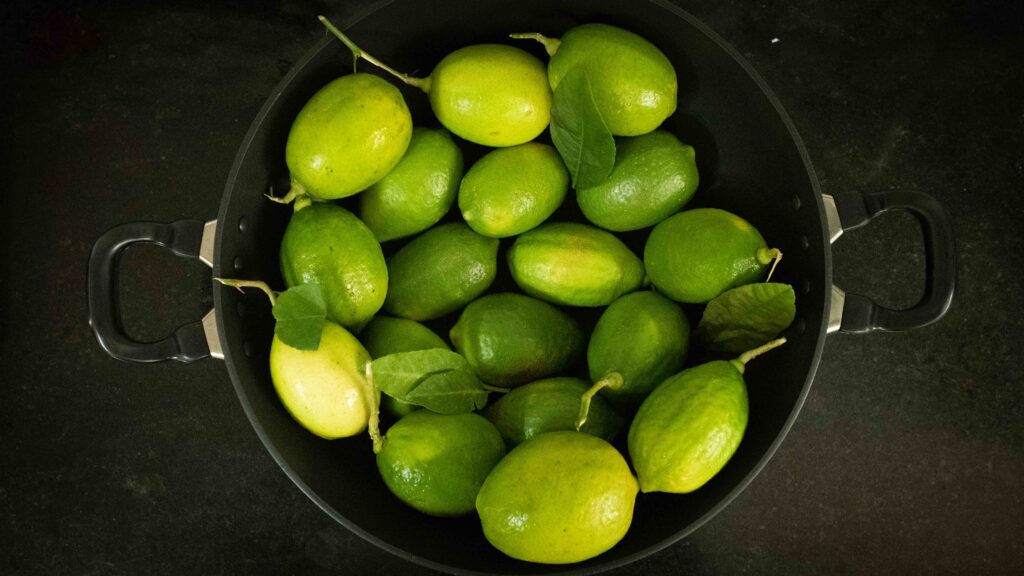

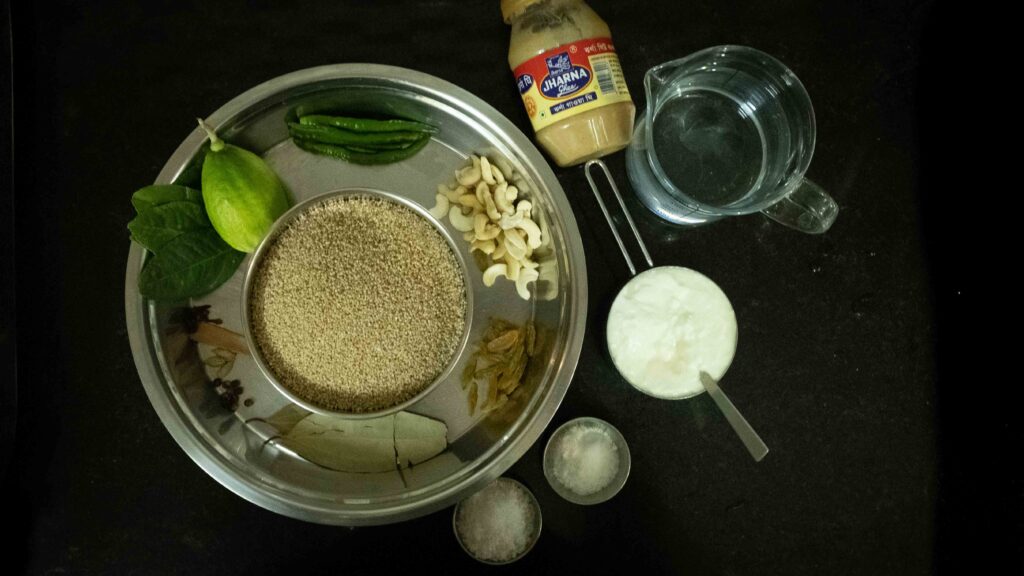
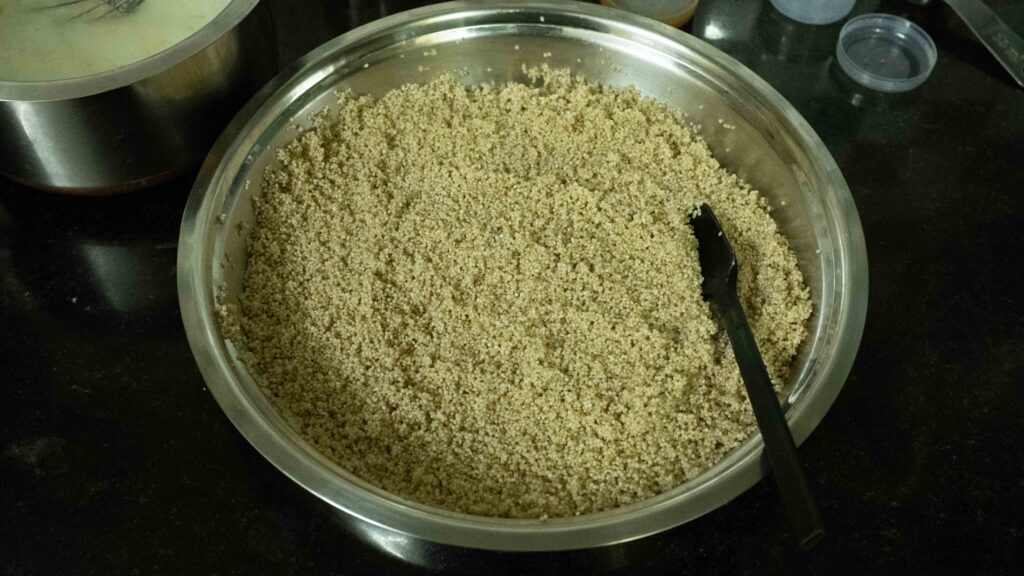
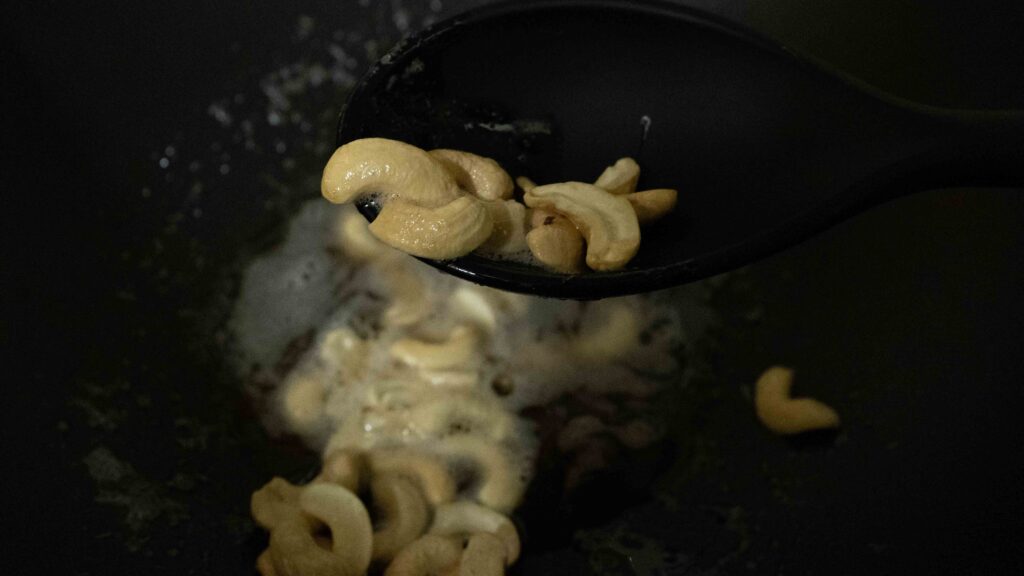
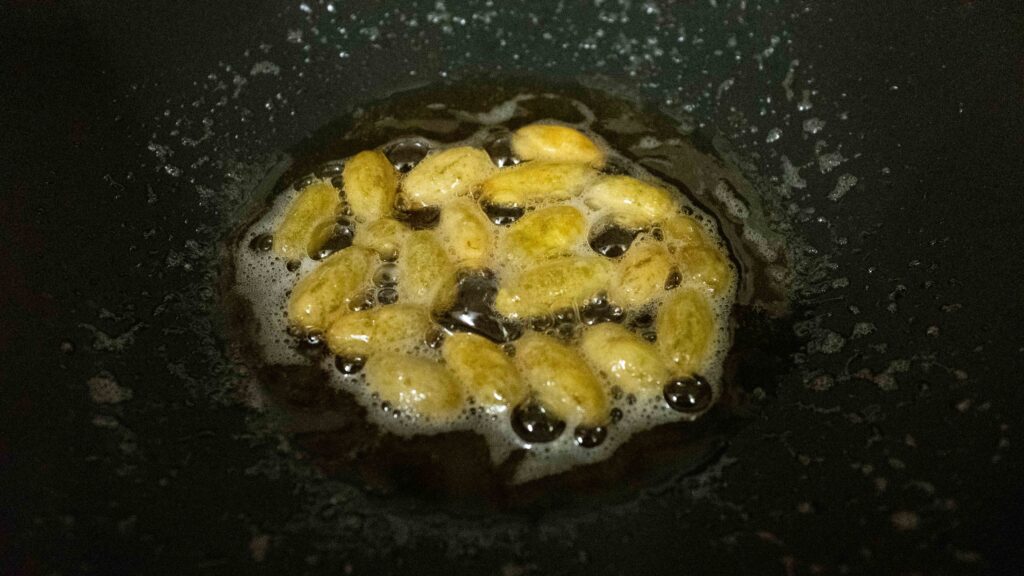
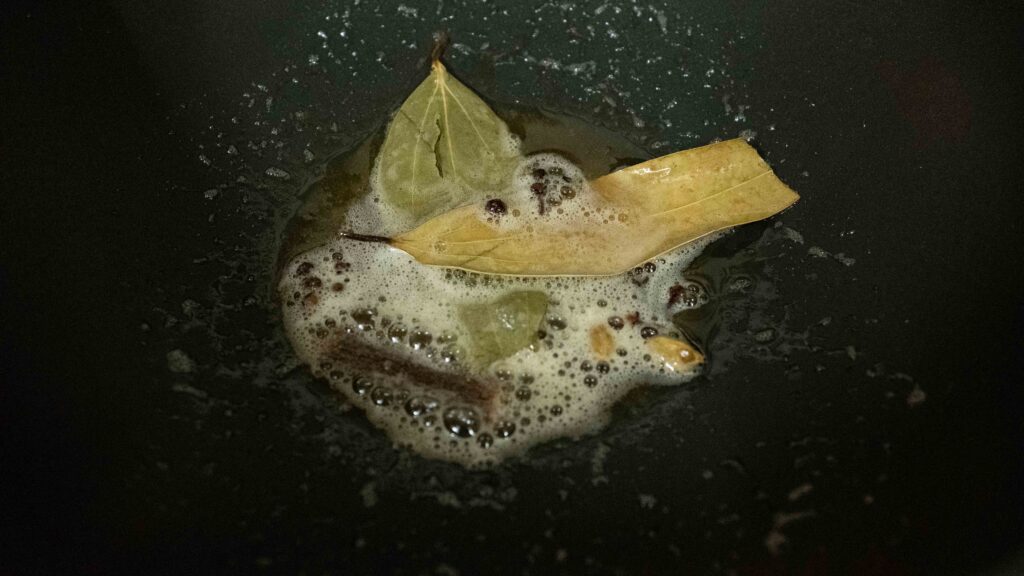
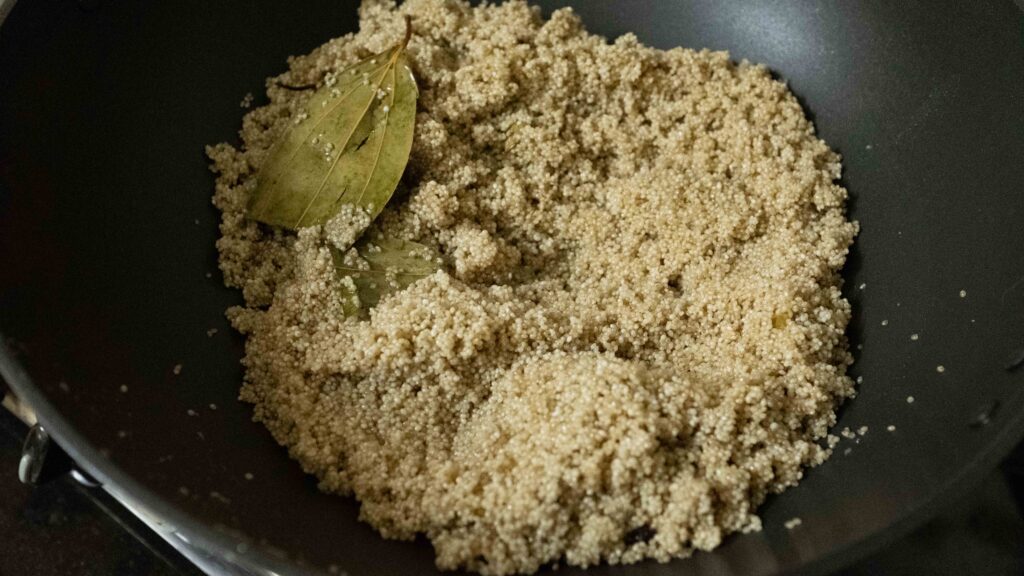
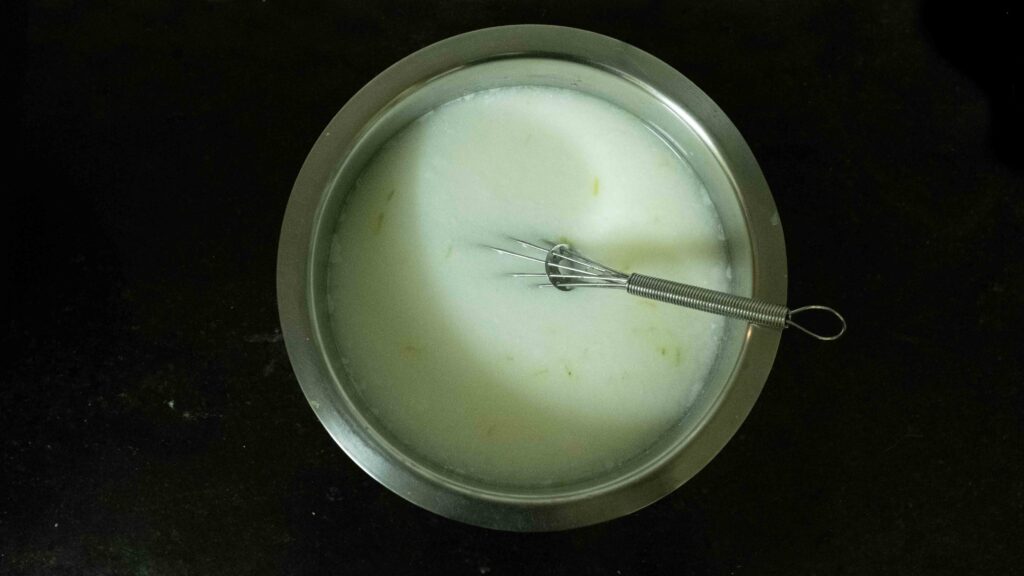
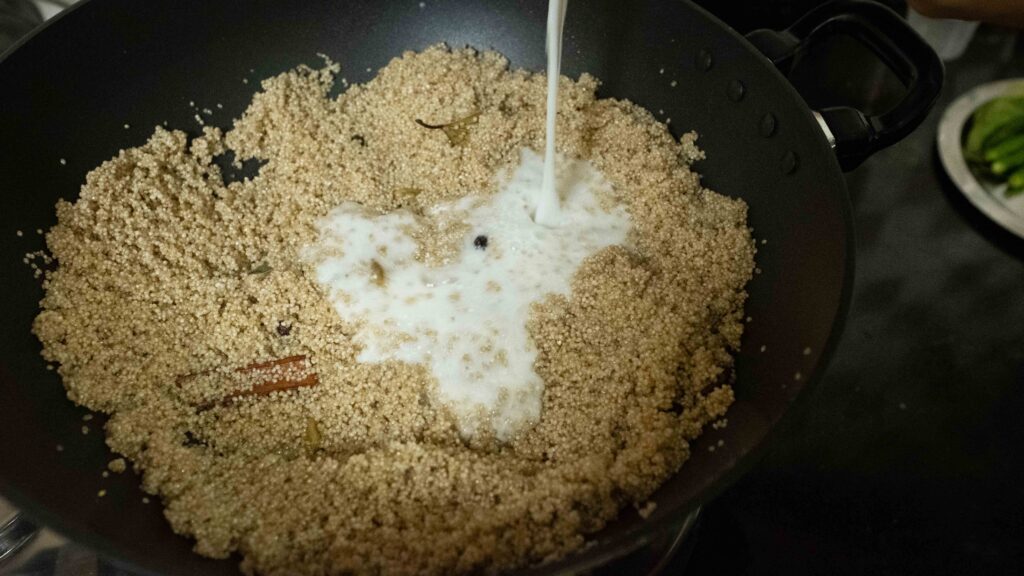
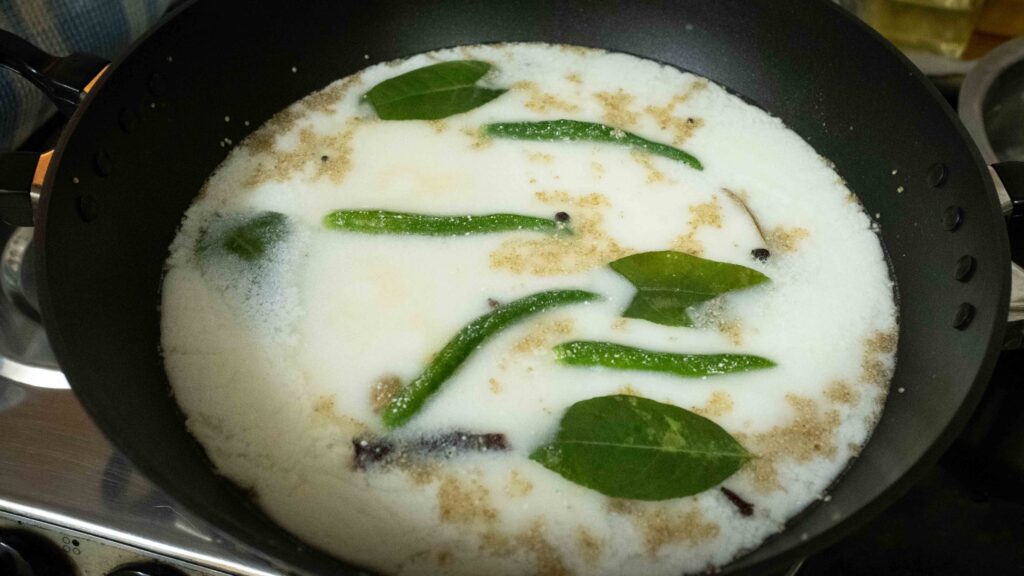
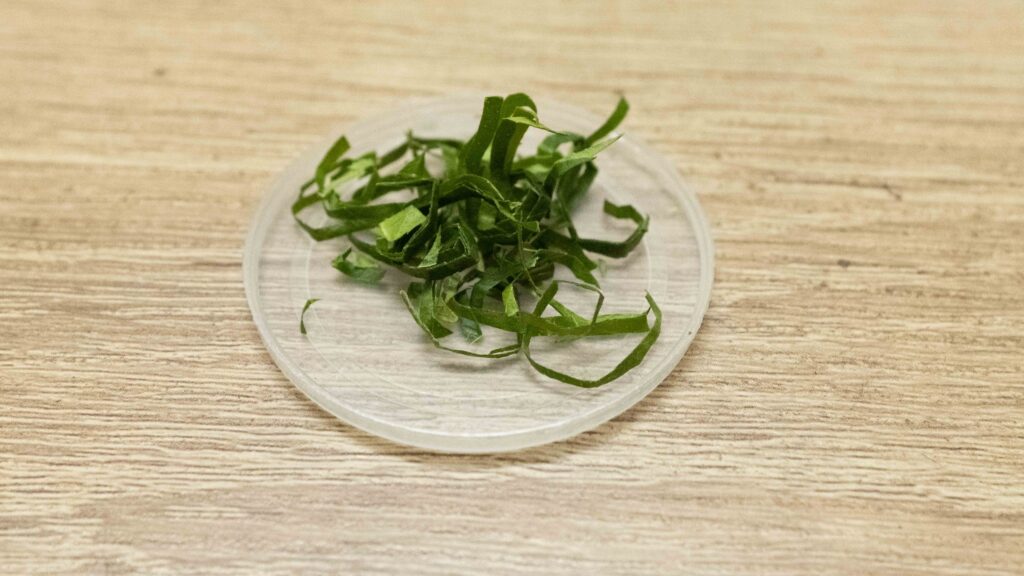
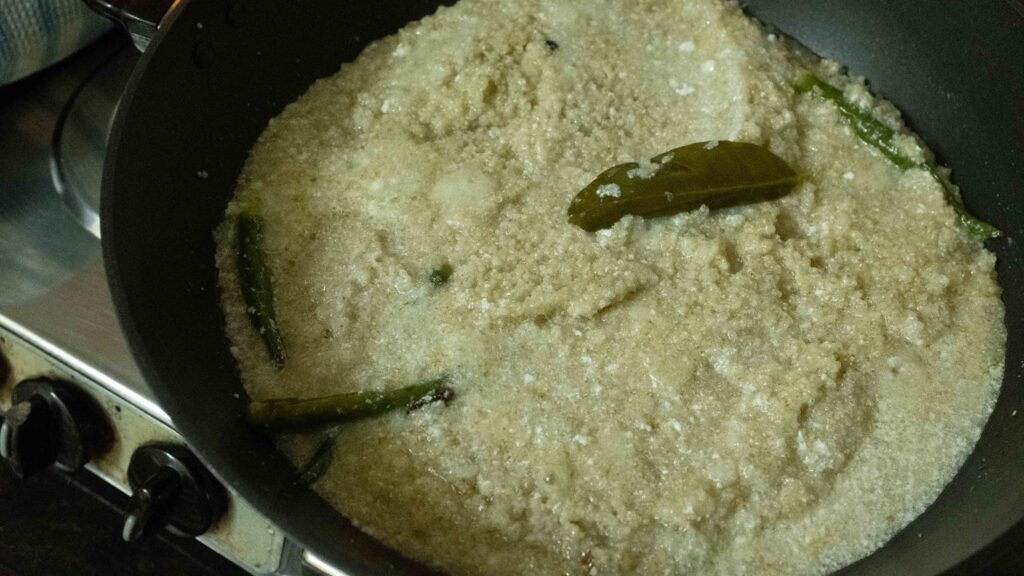
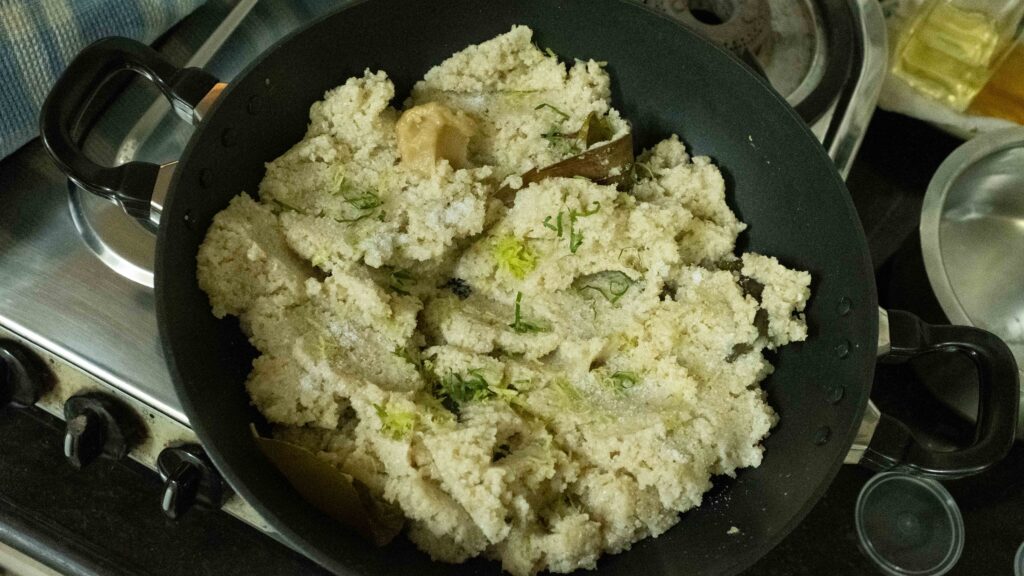
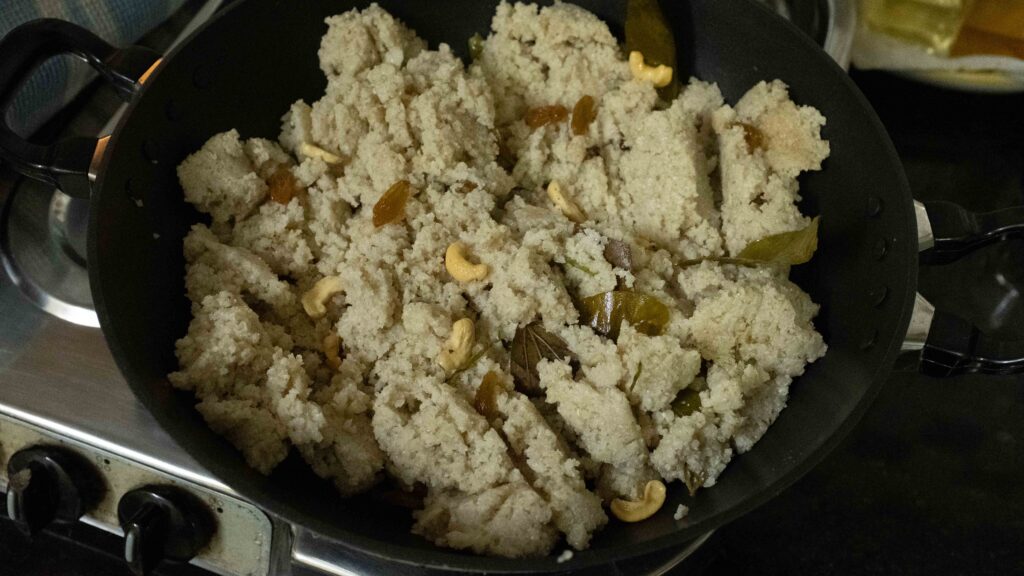
Millets are coarse grains that belong to the grass family. A rich source of proteins, fibre, and antioxidants, they come in various sizes and varieties. Please keep in mind that while Little Millet tastes like rice, it does not cook into separate grains like long grained rice such as Basmati. In fact, the end cooked result is kind of like upma in terms of texture. You will get clumps, but these can be easily fluffed into separate grains with your hand or a fork. If you’re not following any Navratri diet norms, please feel free to swap out the little millet for actual rice—our grain of choice is Gobindhobog Rice. It’s not just perfectly suited to Bengal pilaf dishes, it also possesses a beautiful buttery fragrance that marries perfectly with the heady aroma of Gondhoraj limes. If you use rice in this recipe (including any kind of long grained variety like jasmine rice), the rice weight and cooking times will vary (rice cooks up faster).
Tips & Tricks
How to clean banana leaves:

